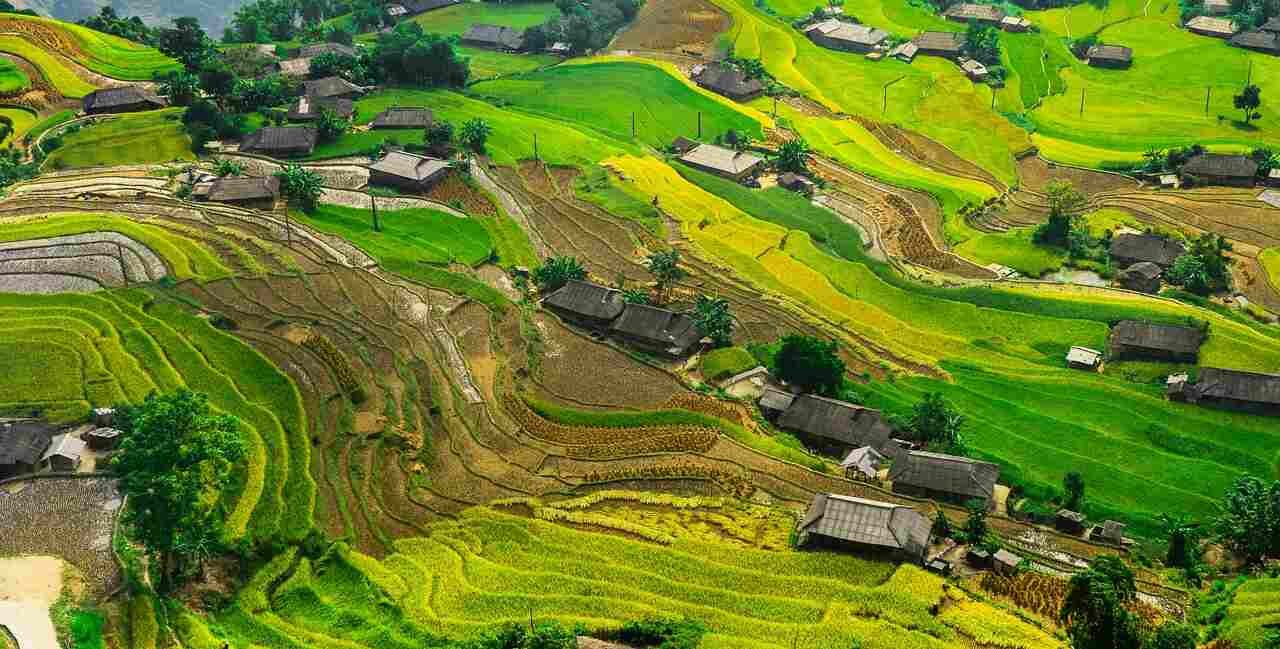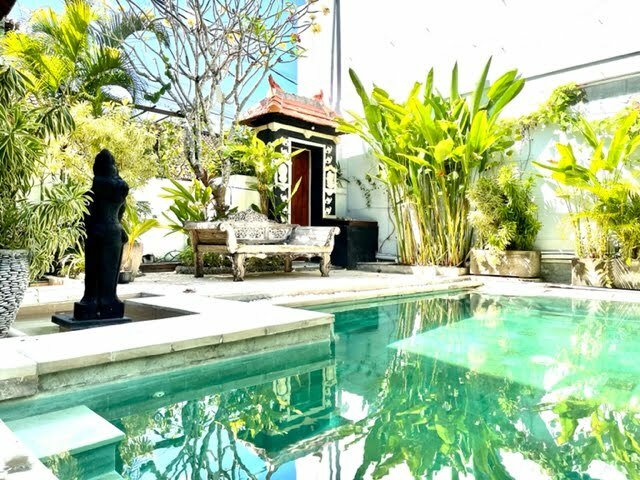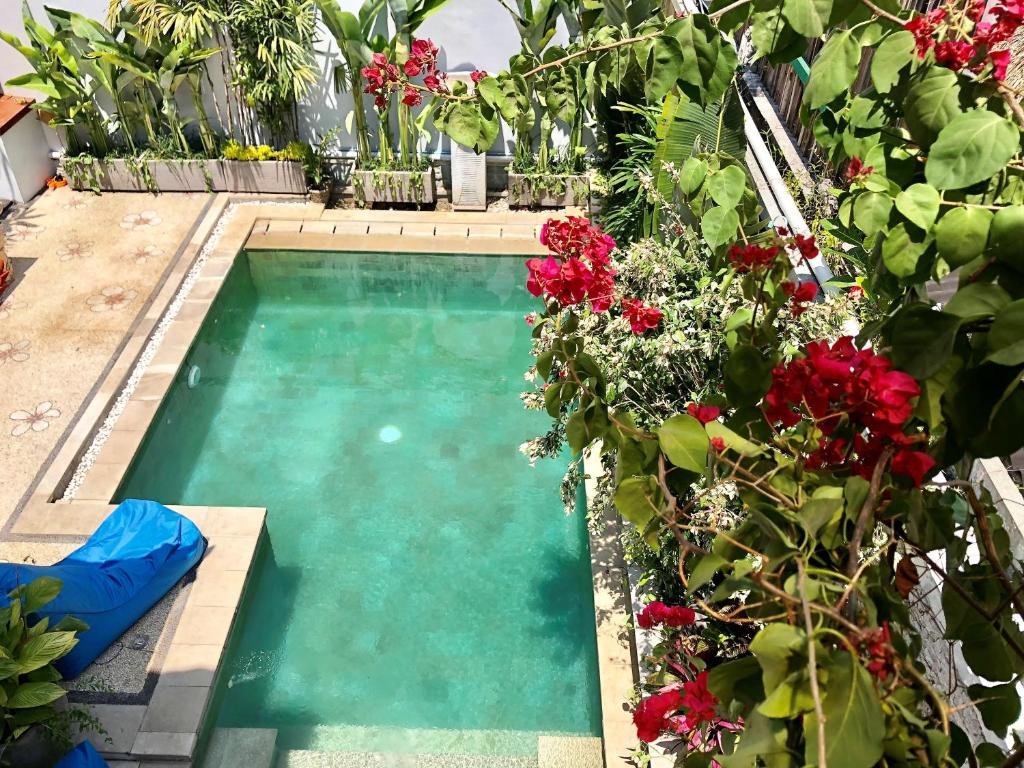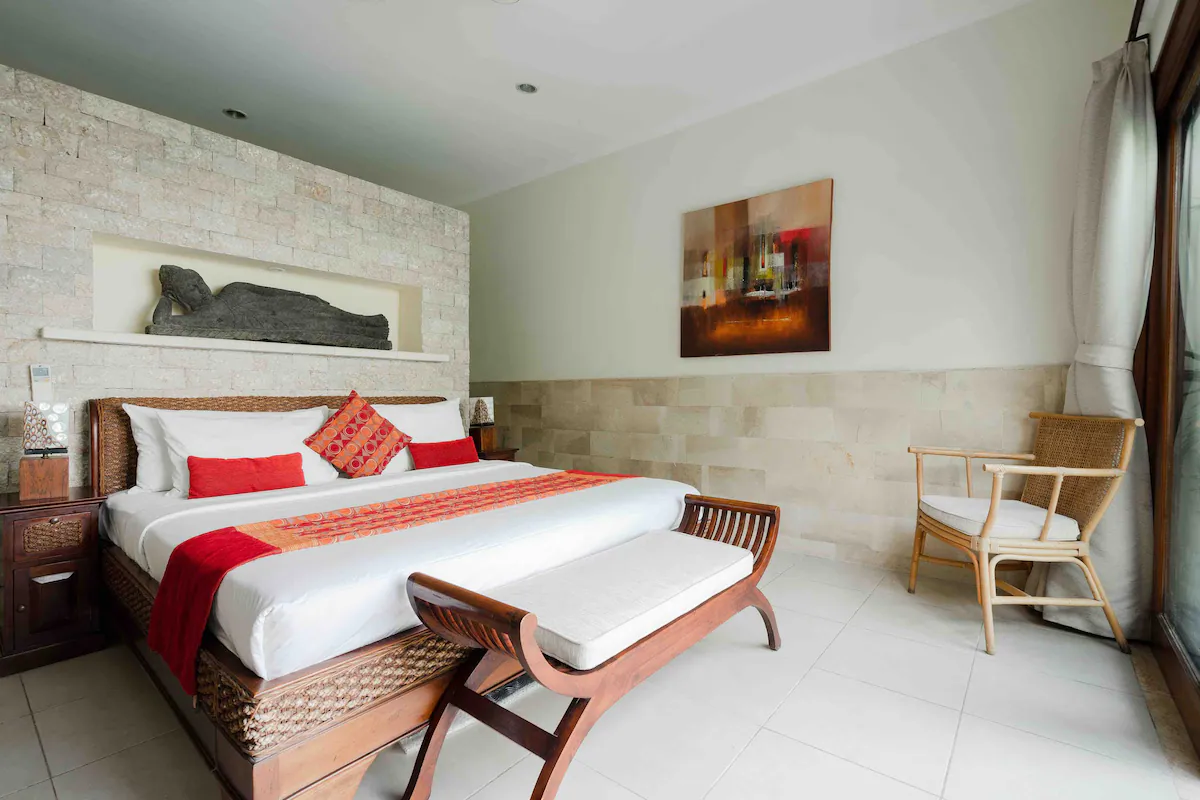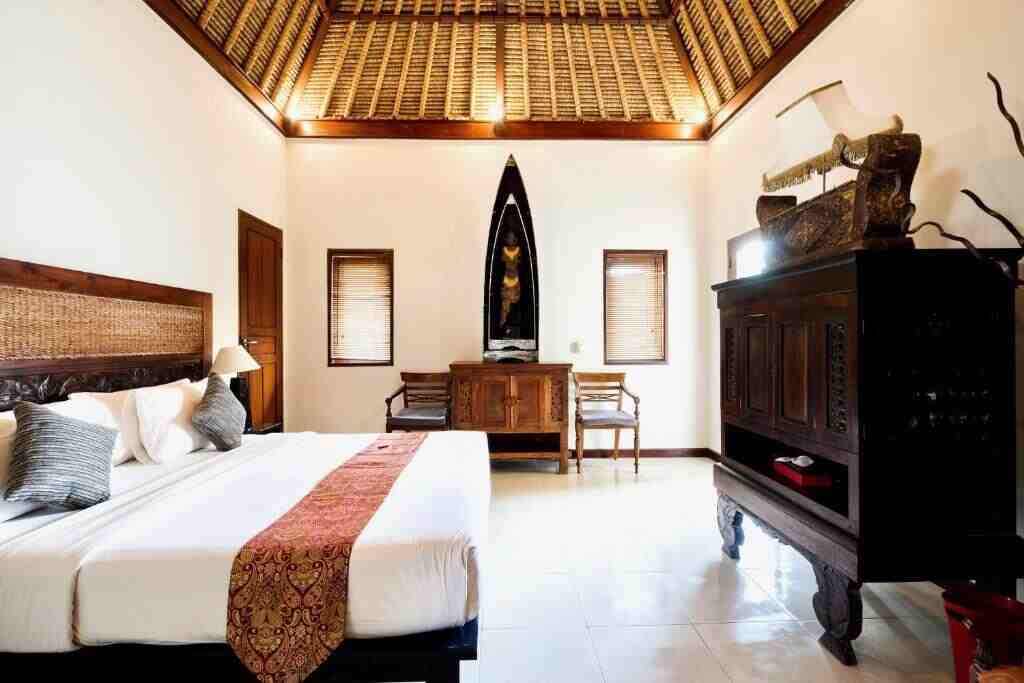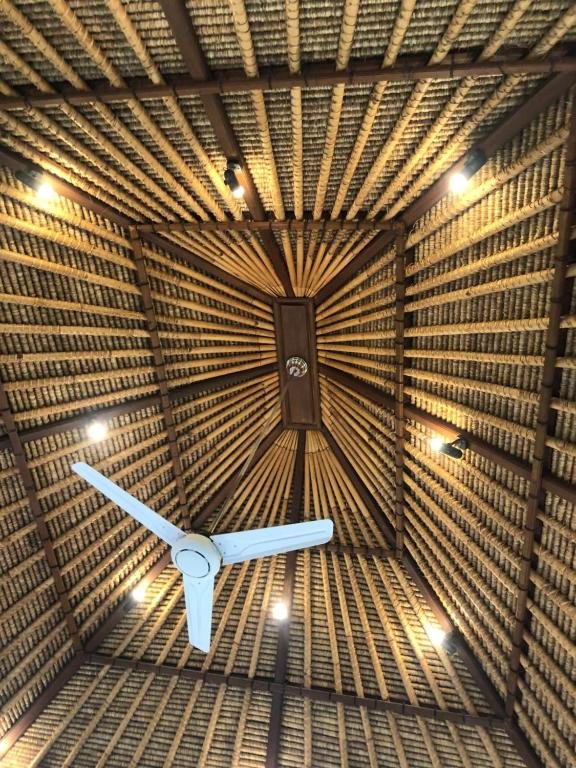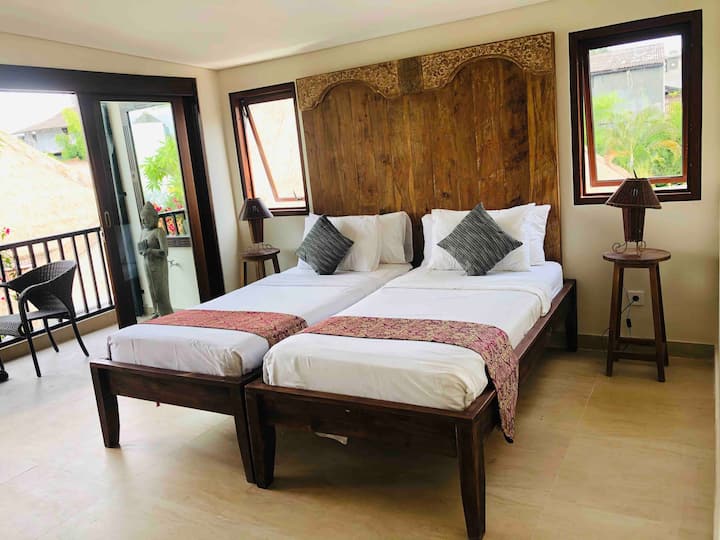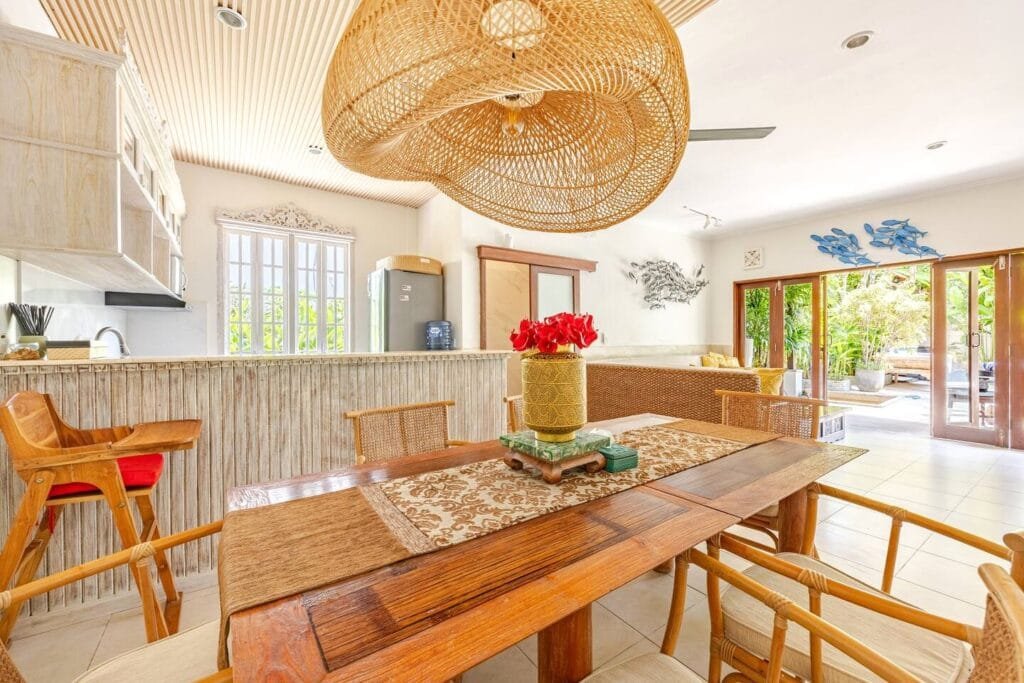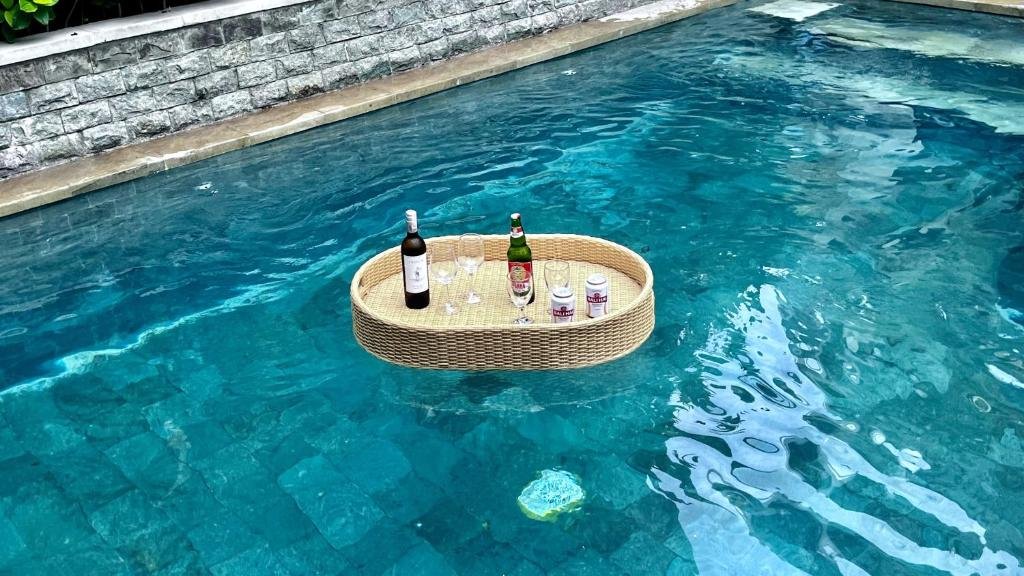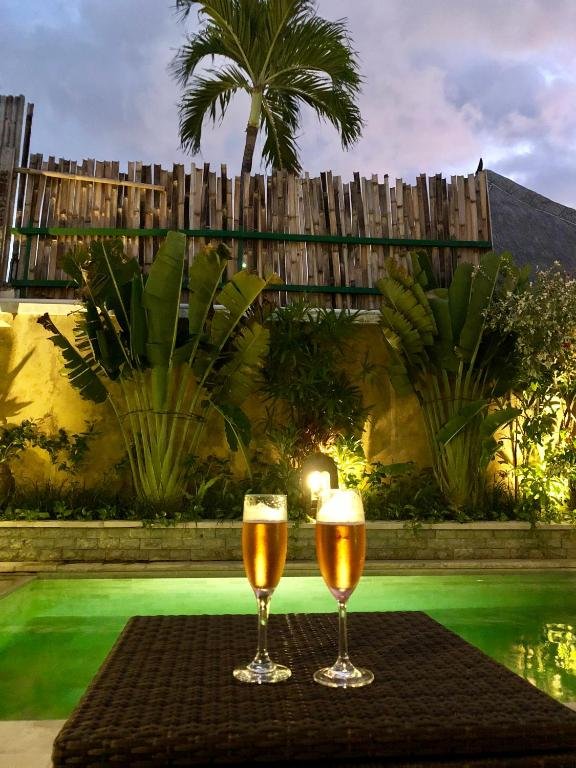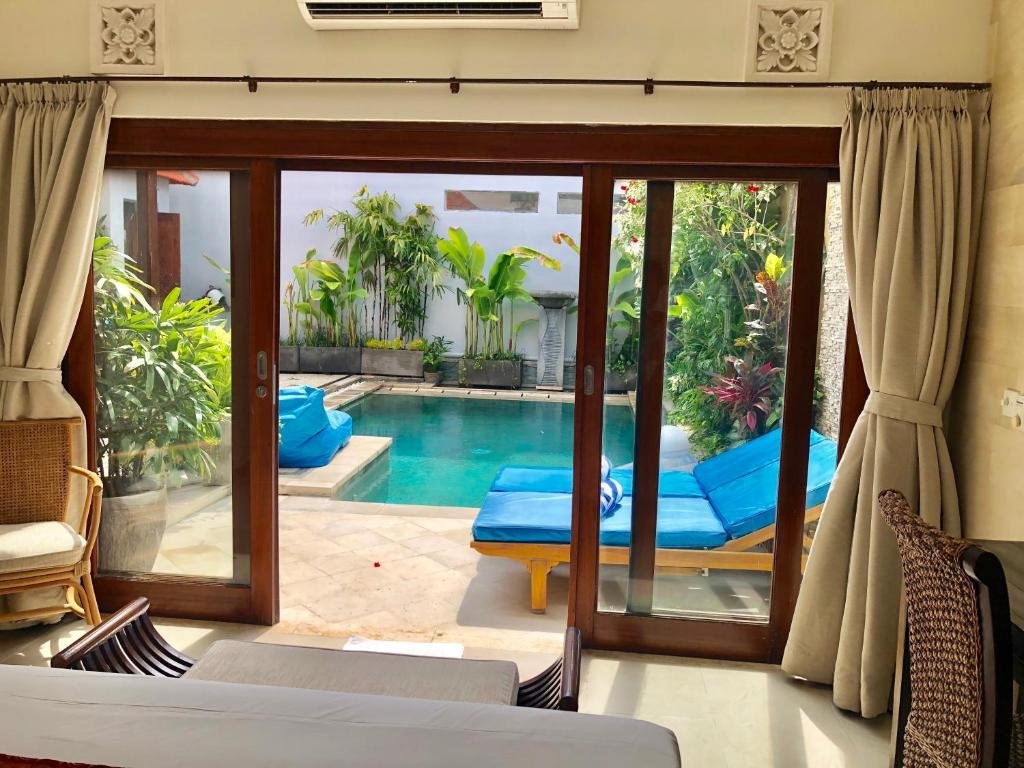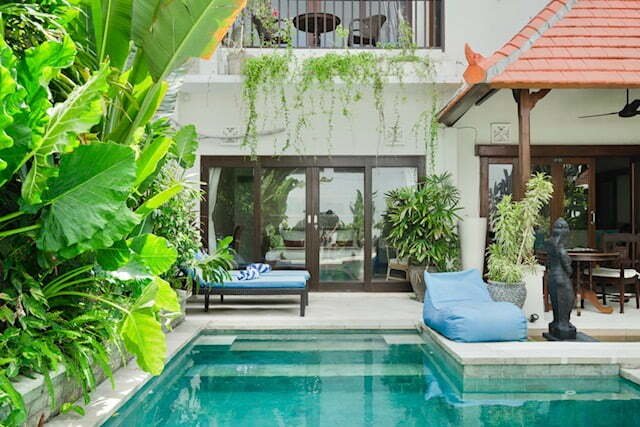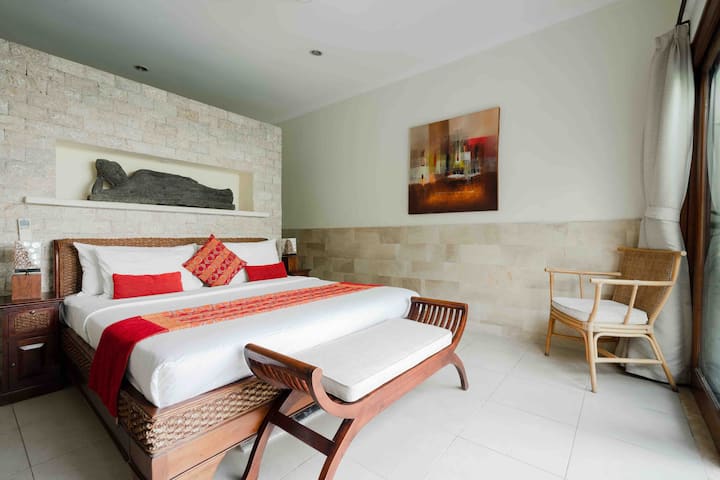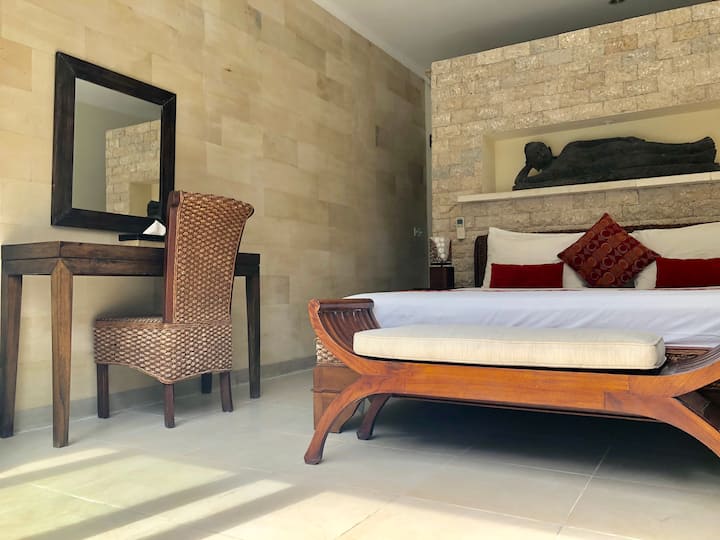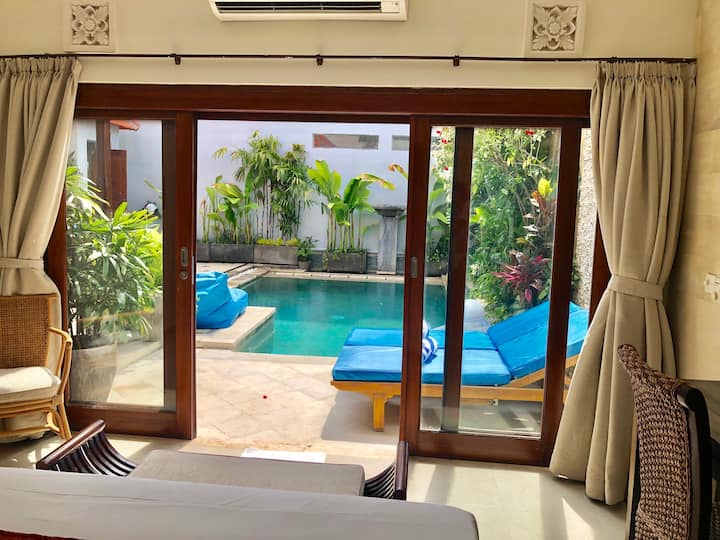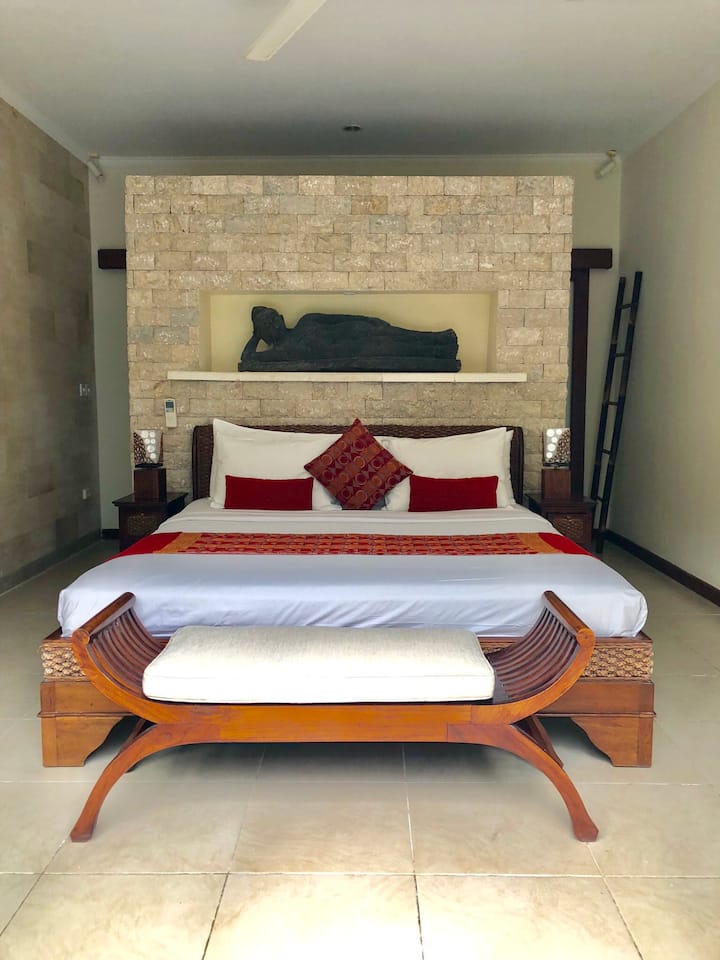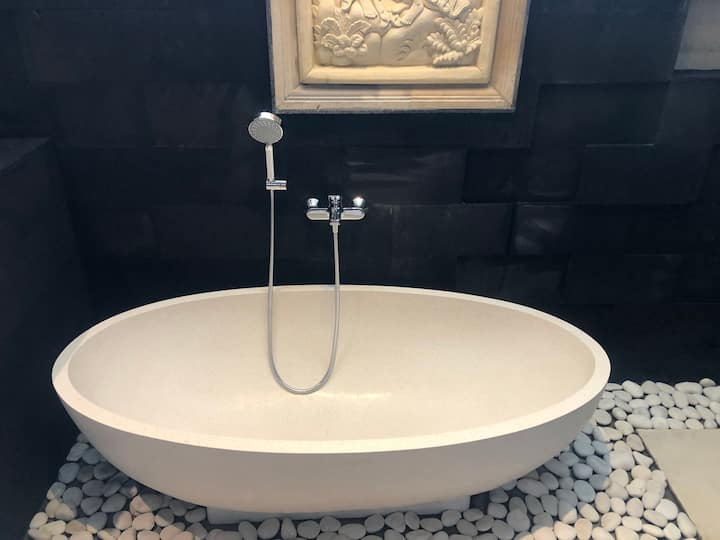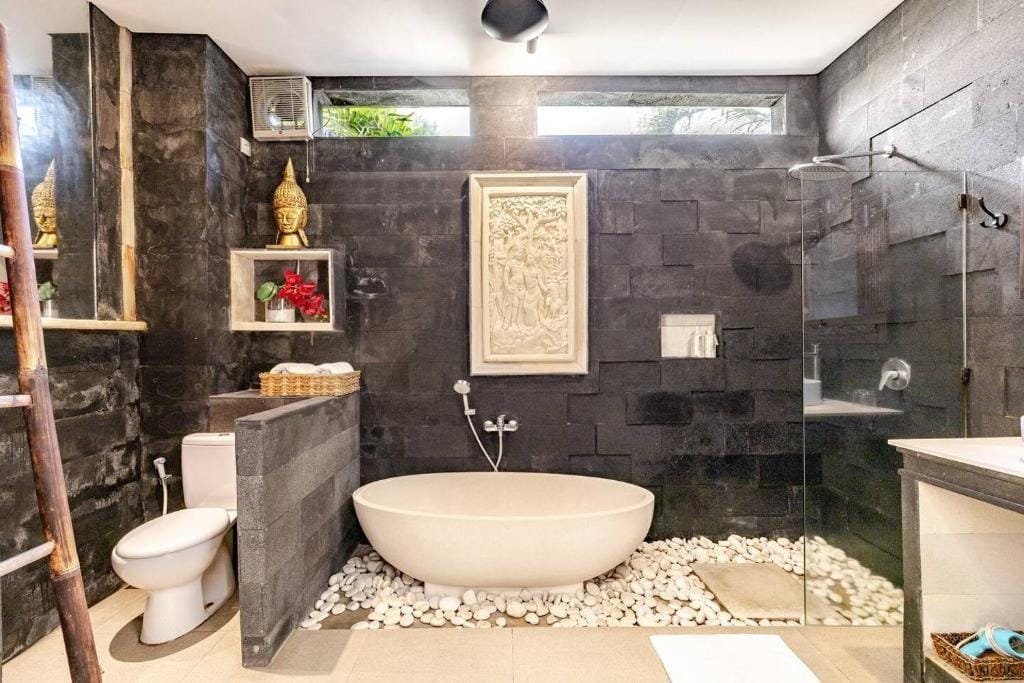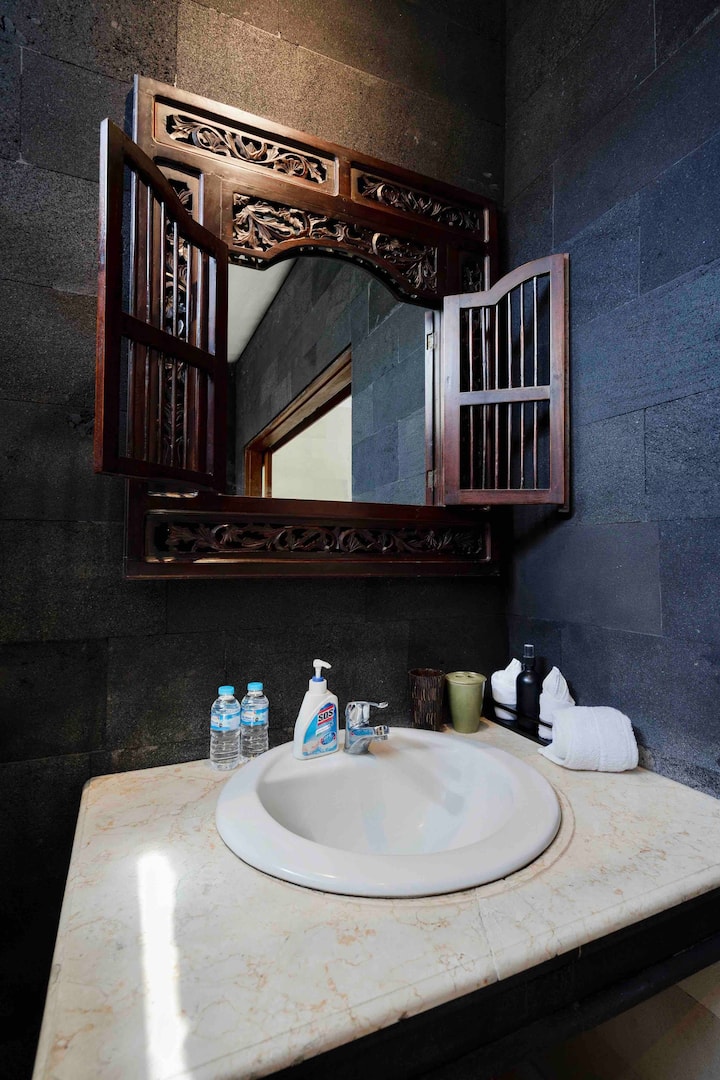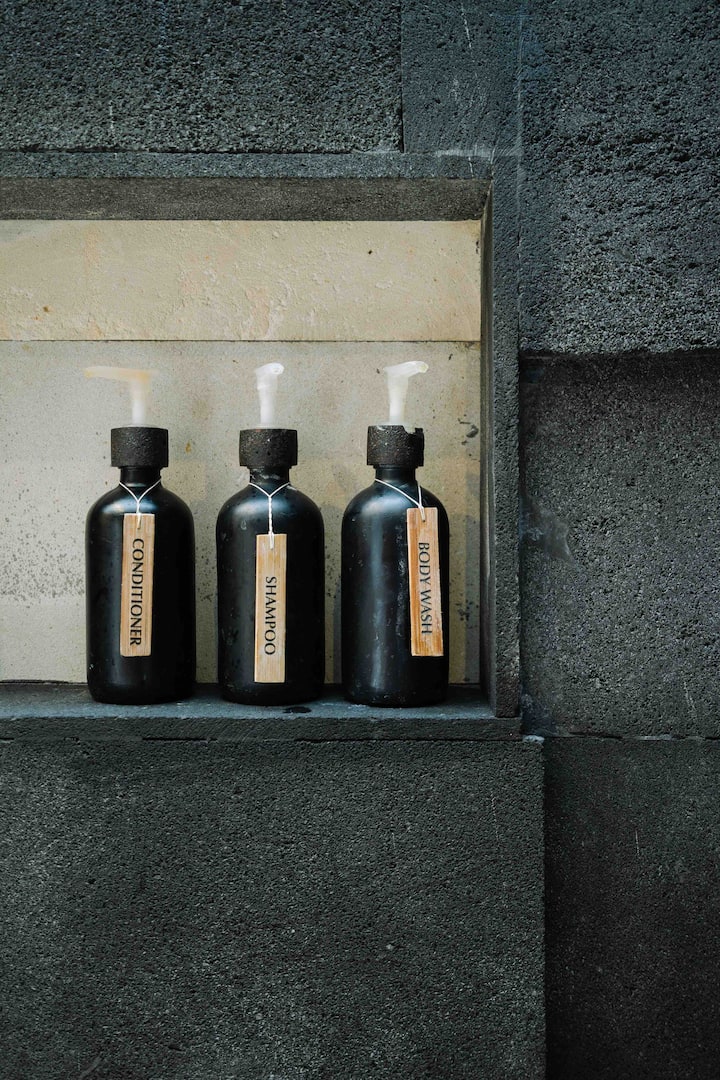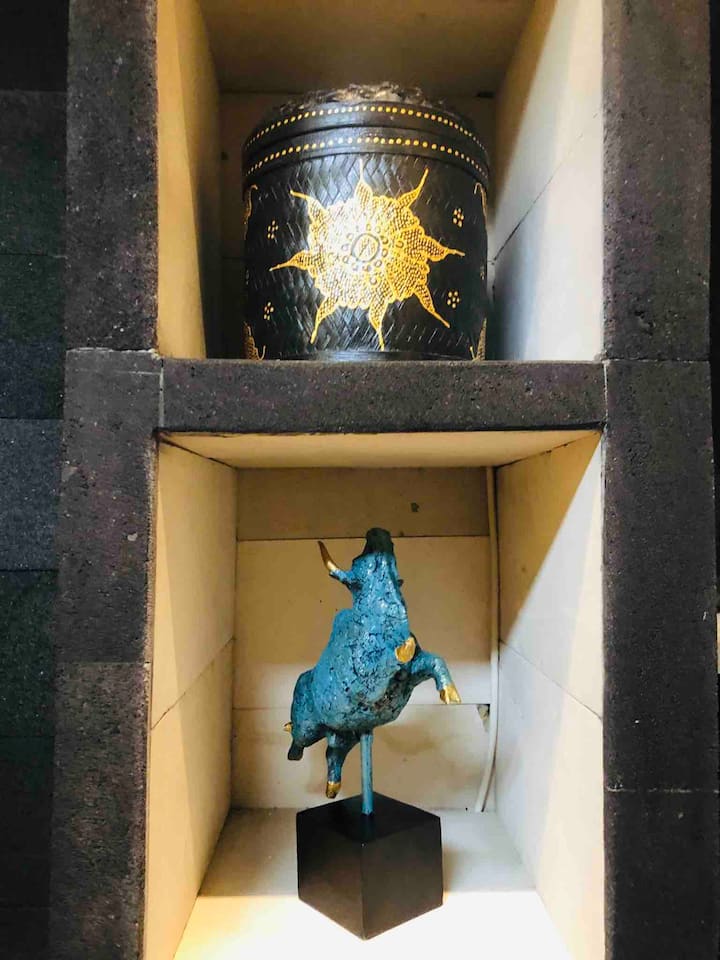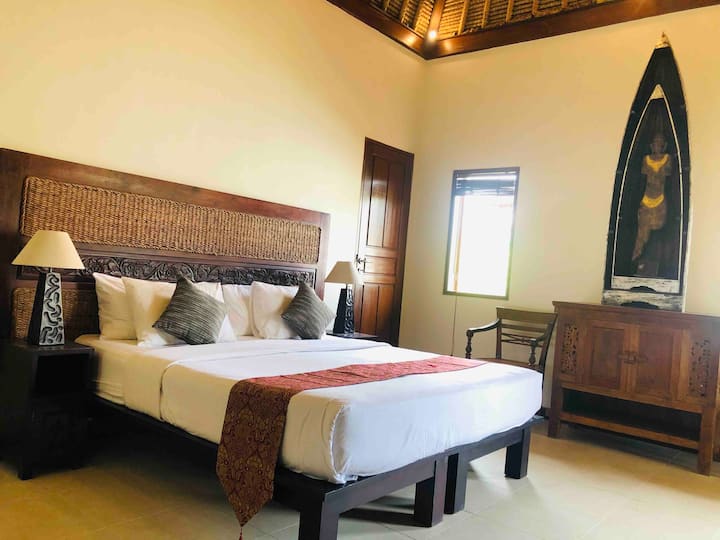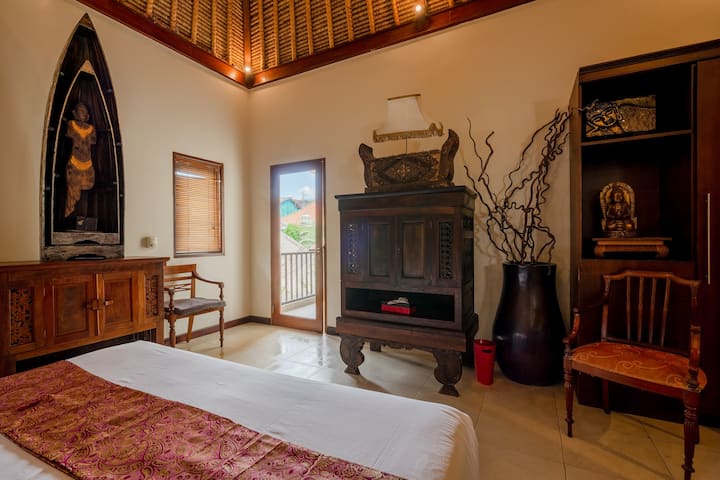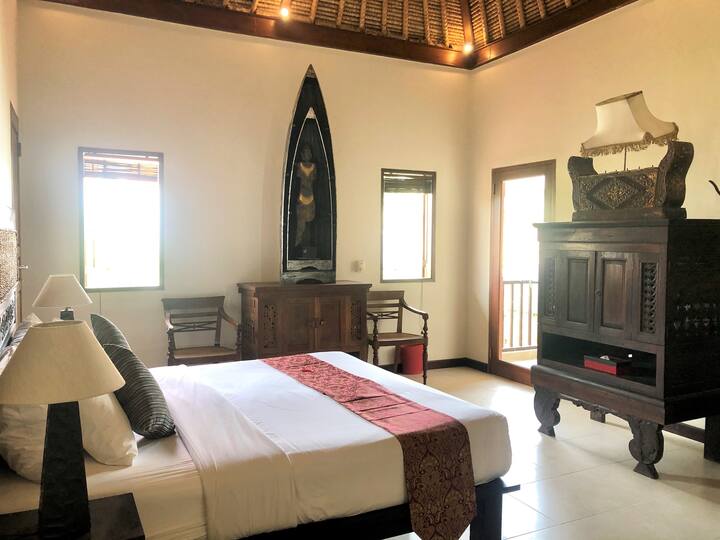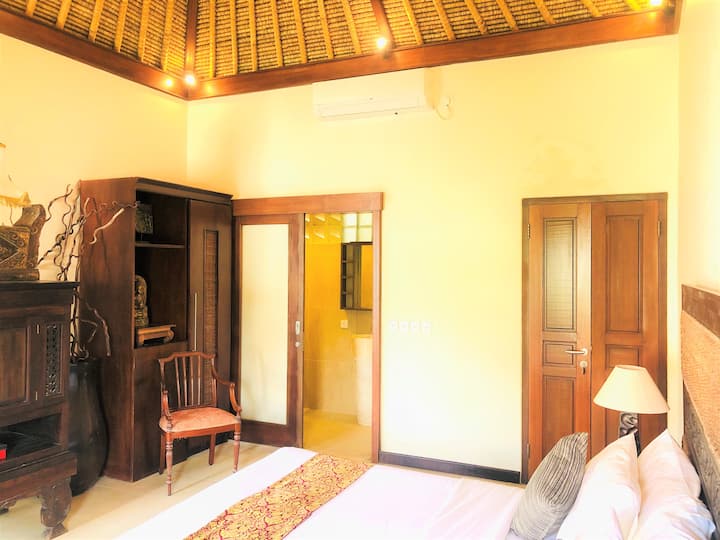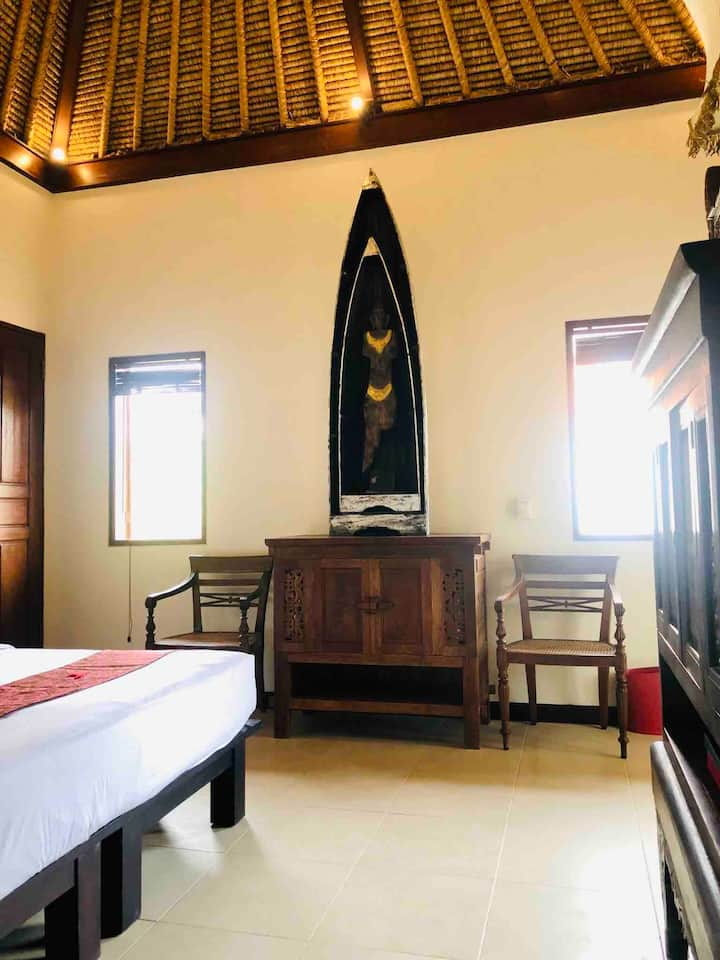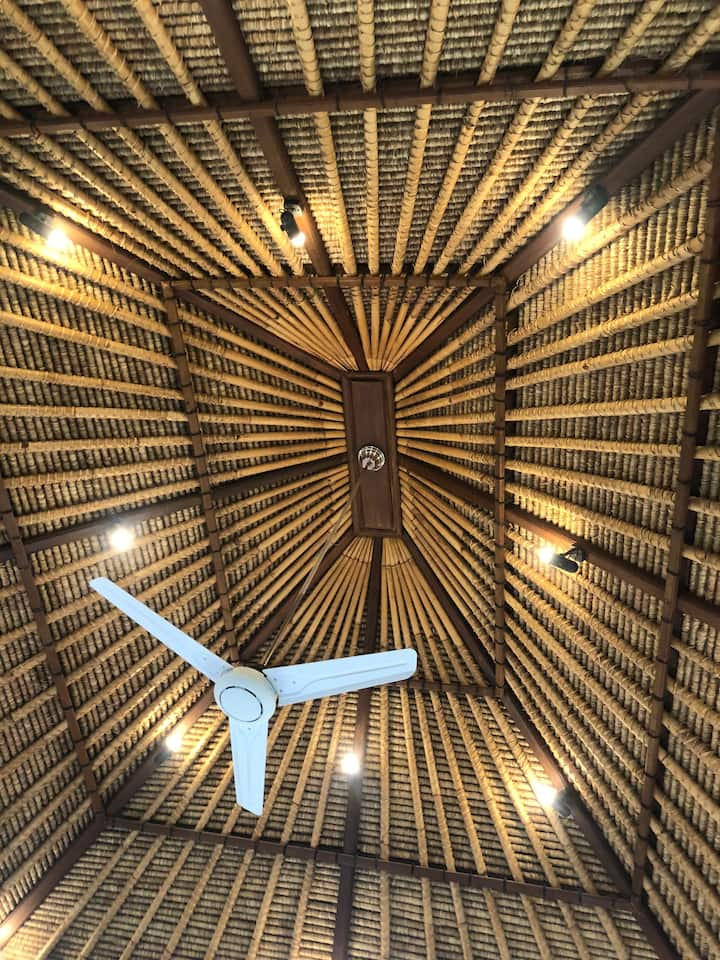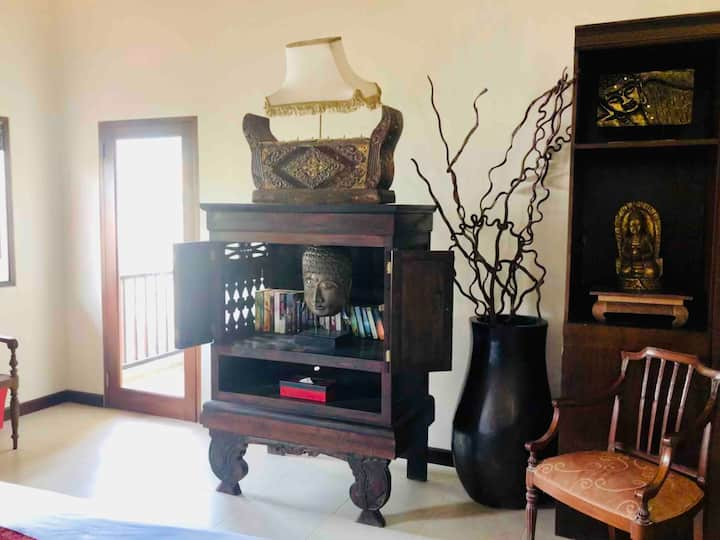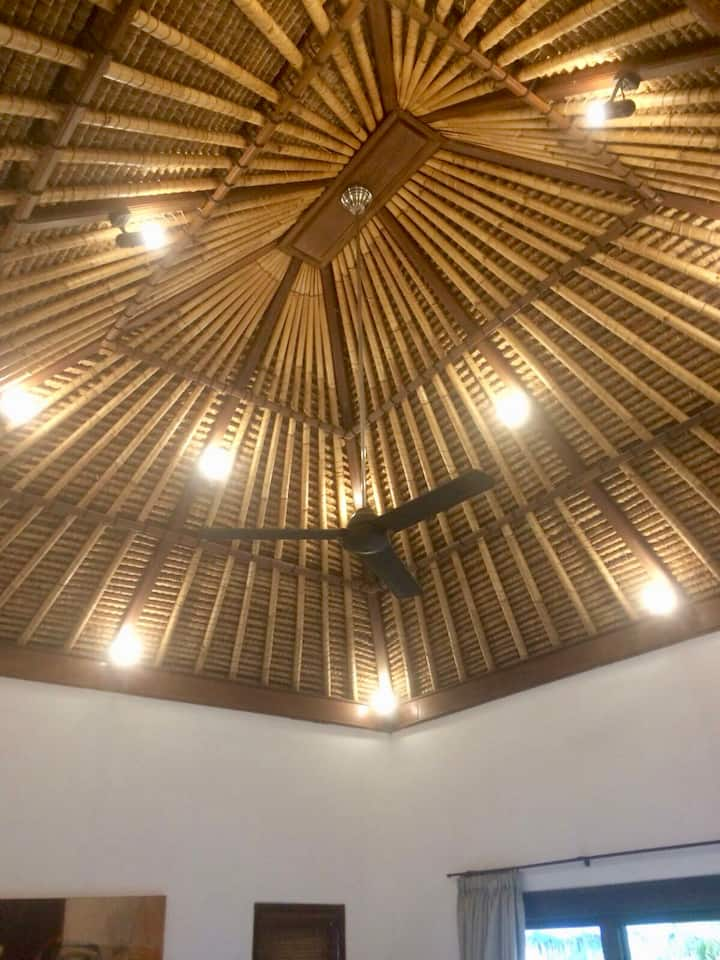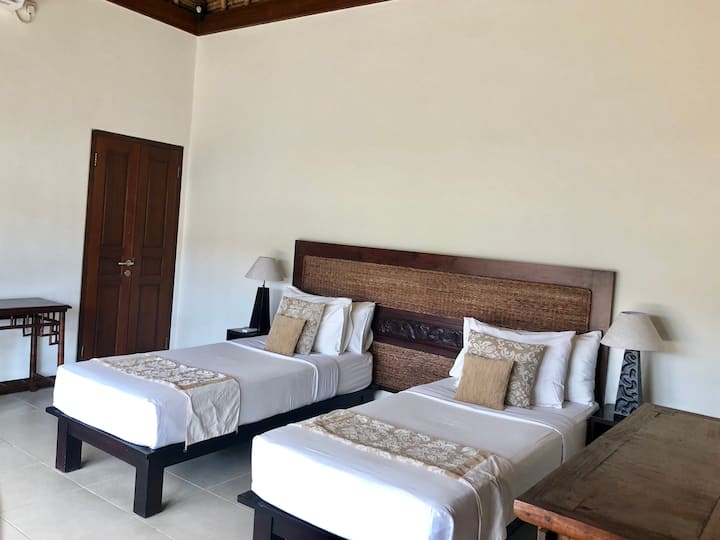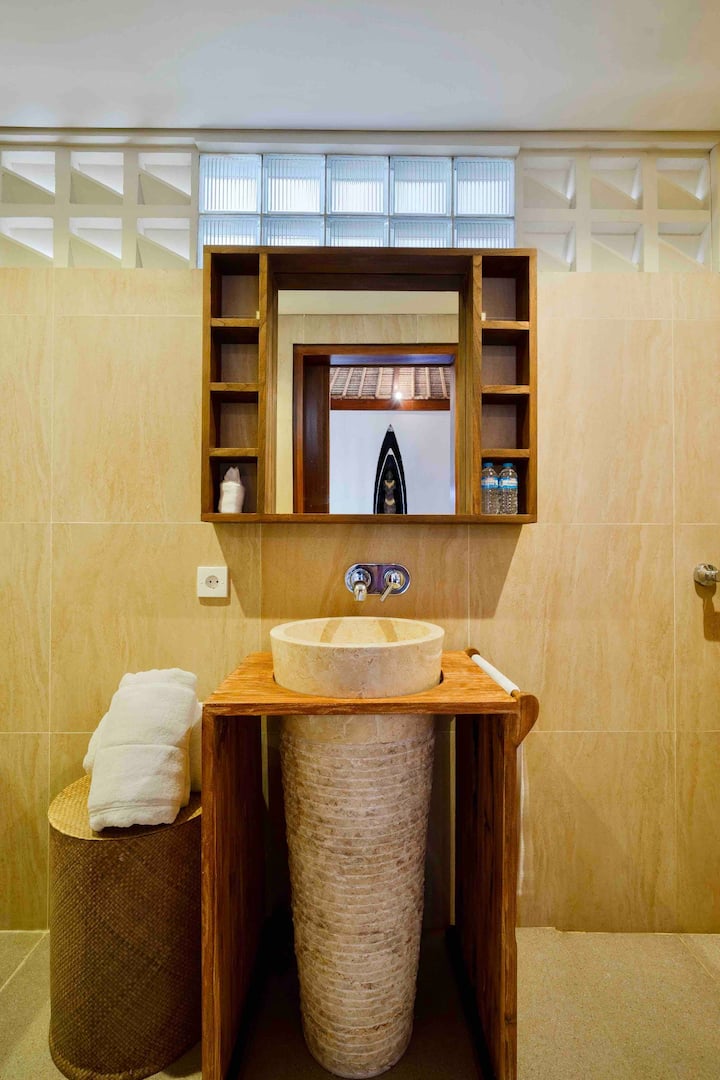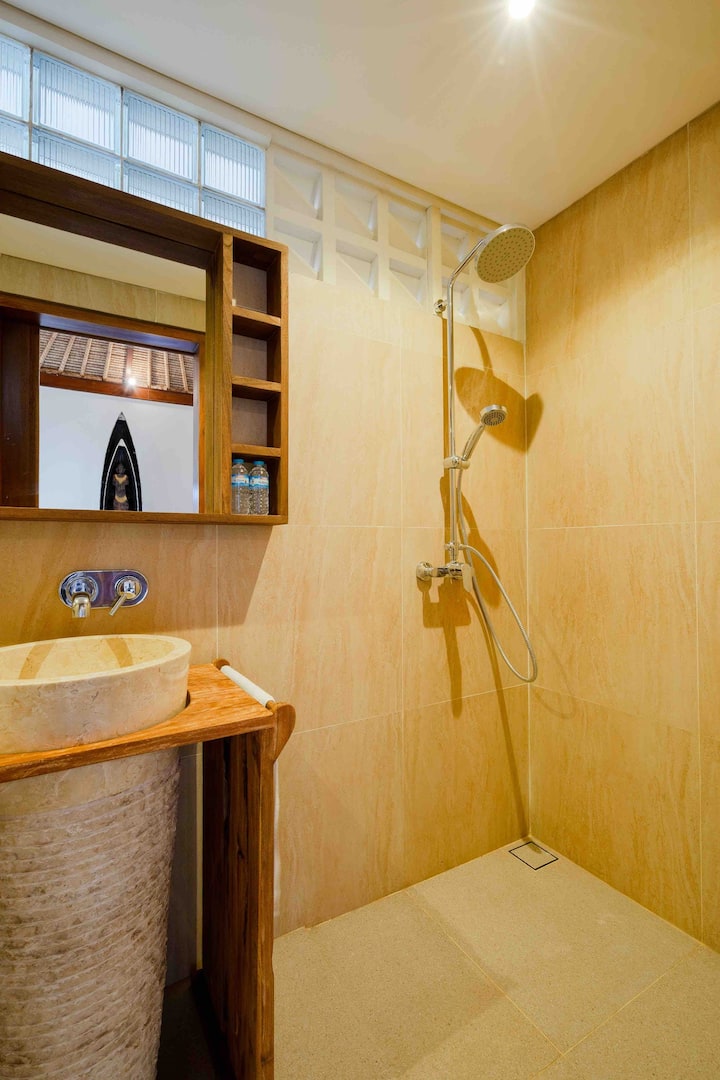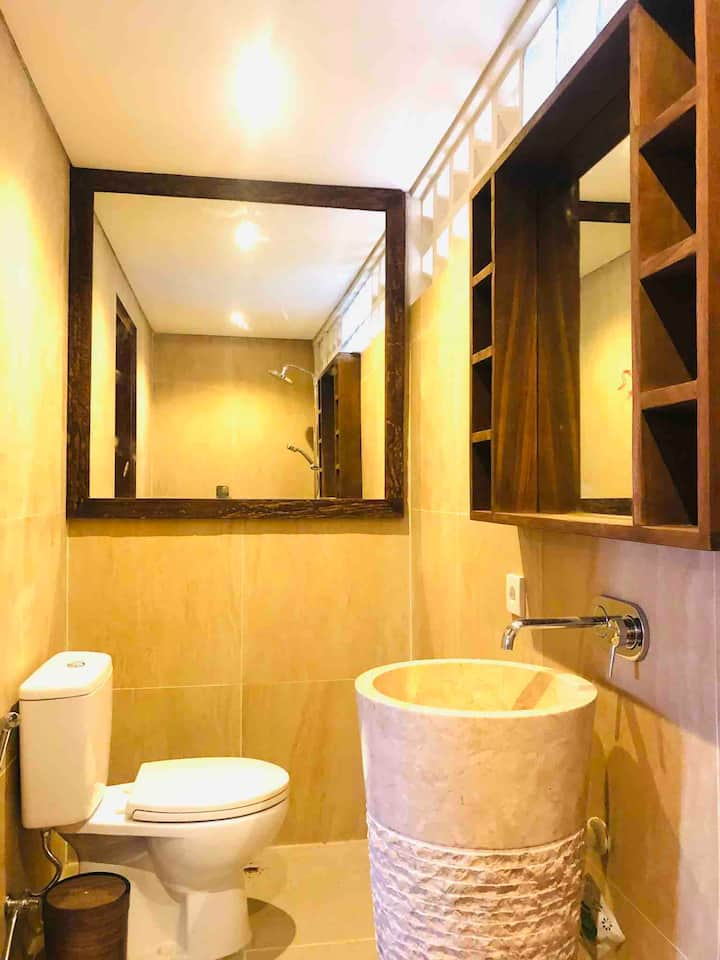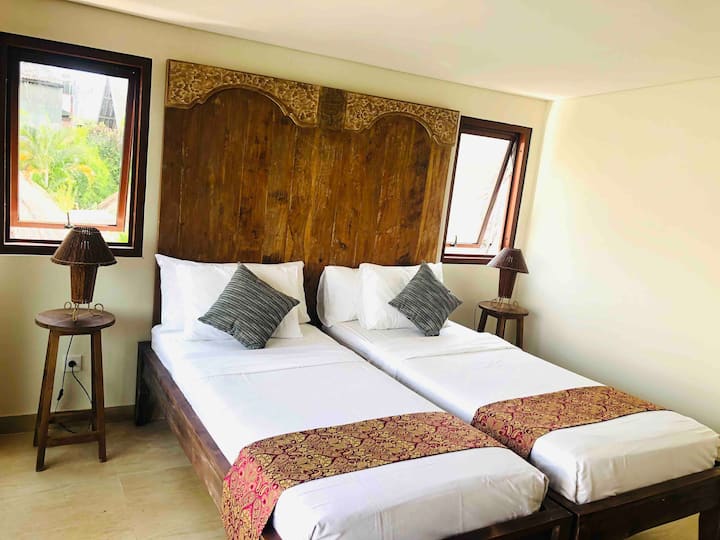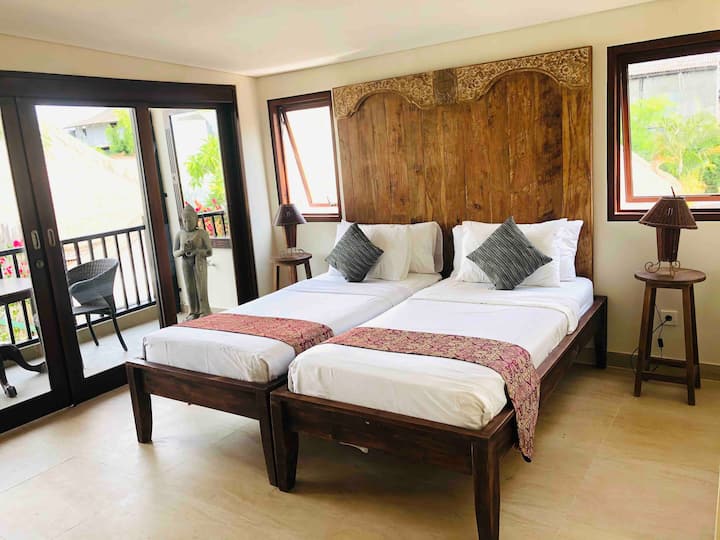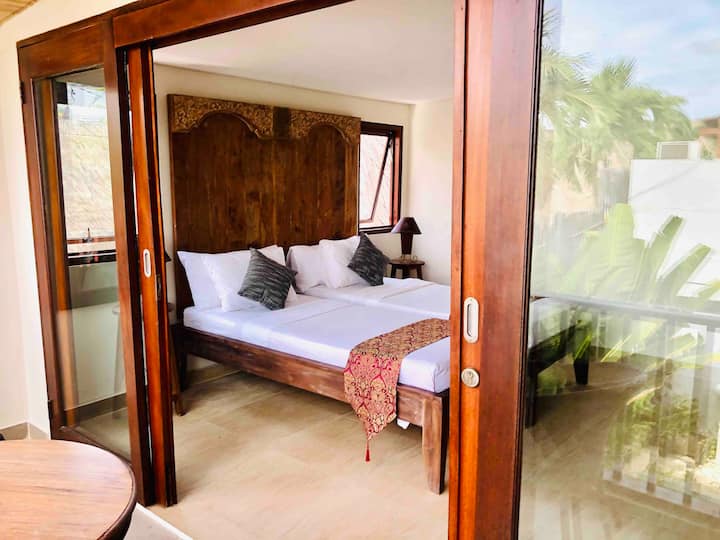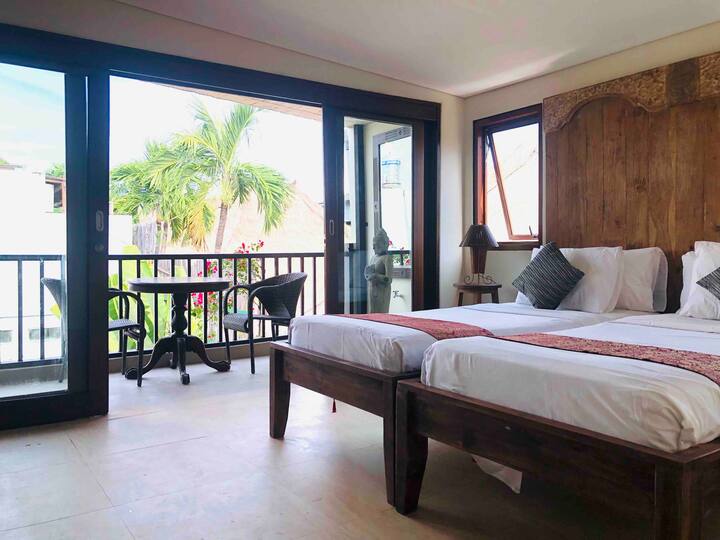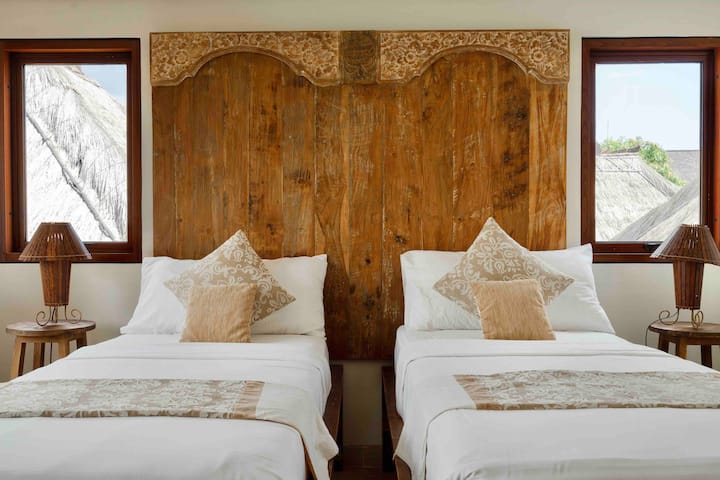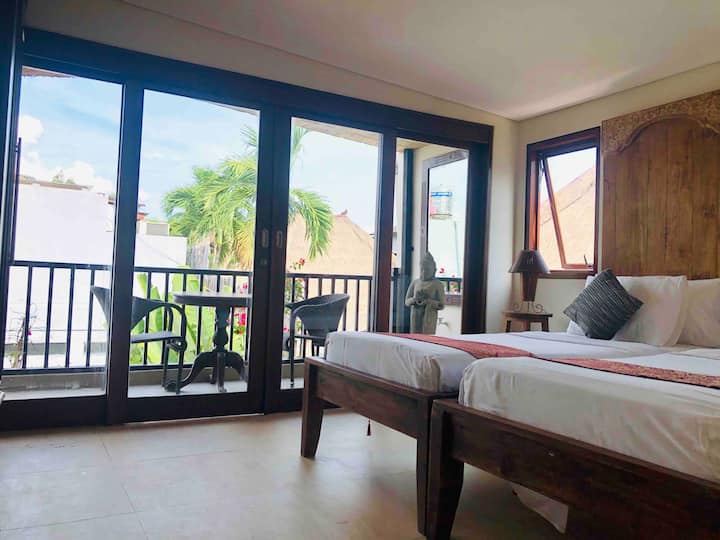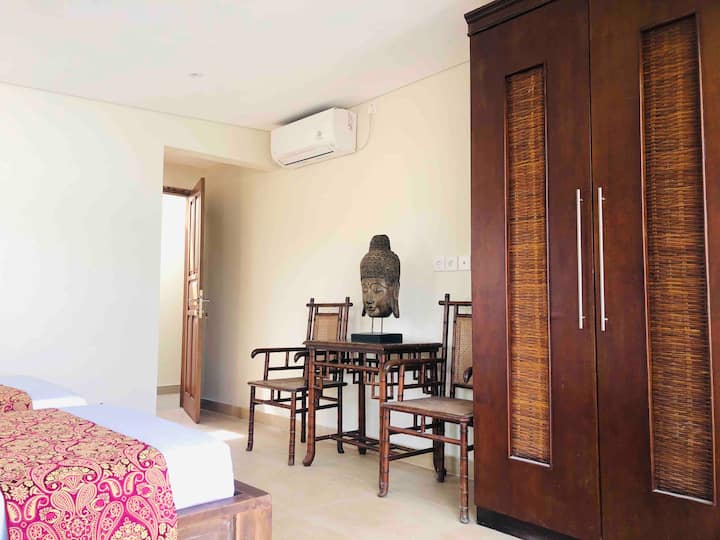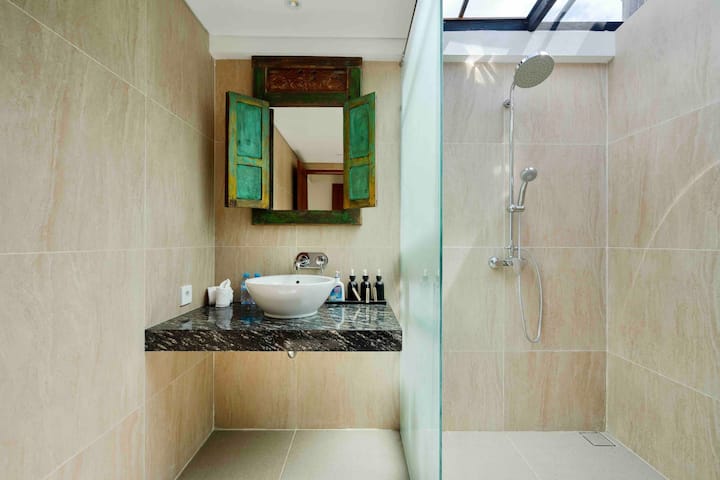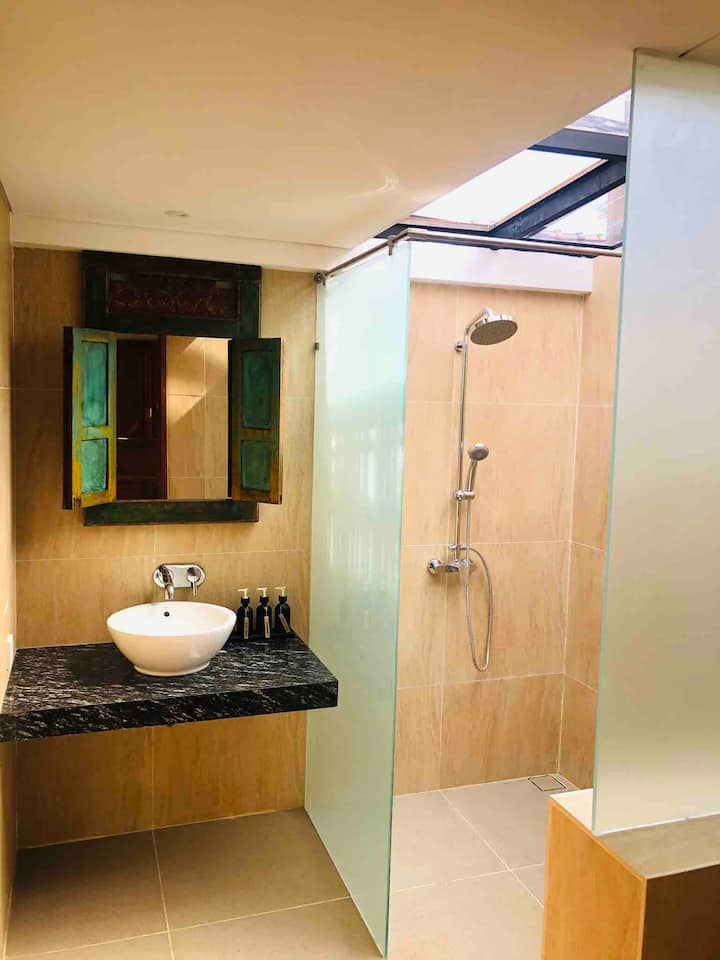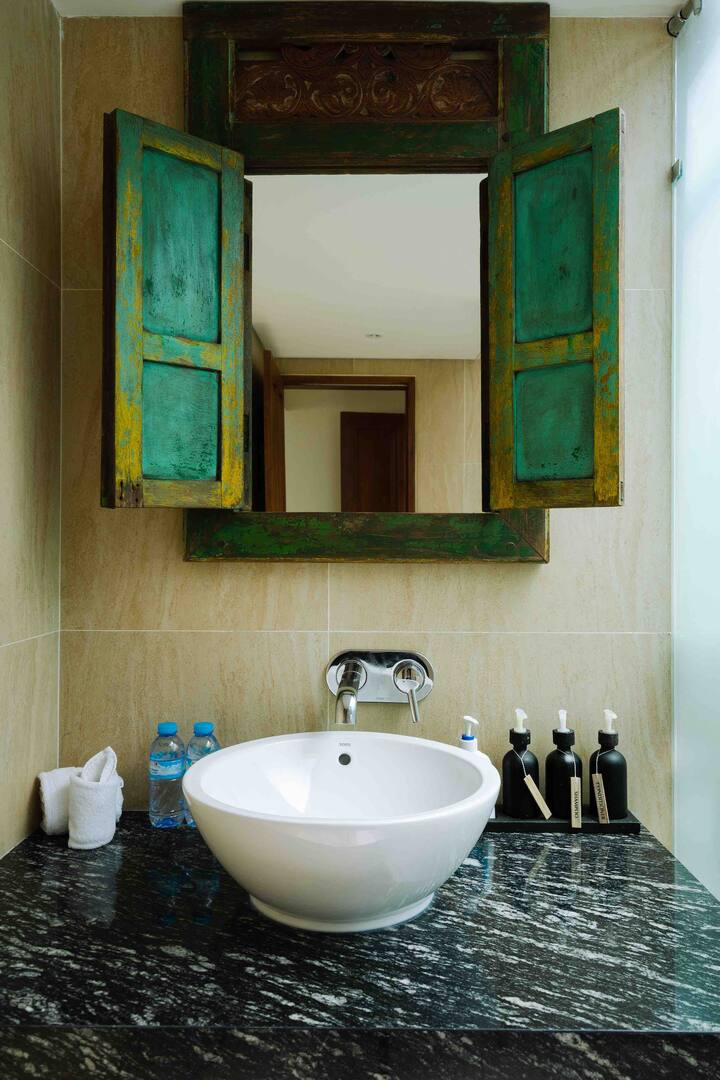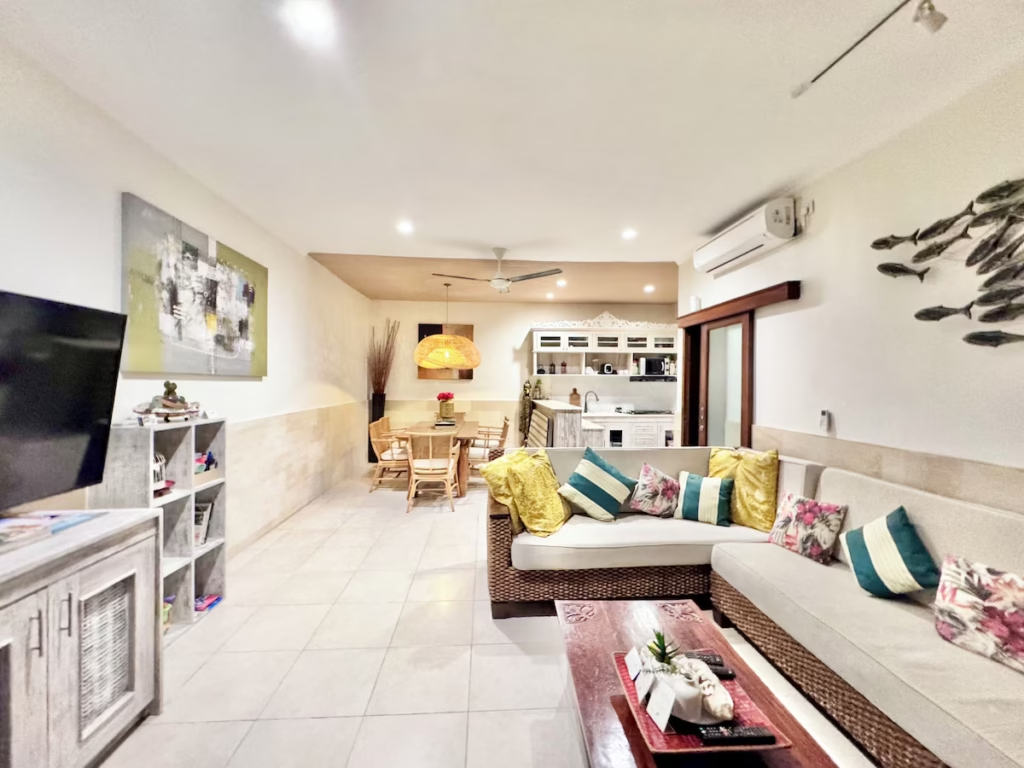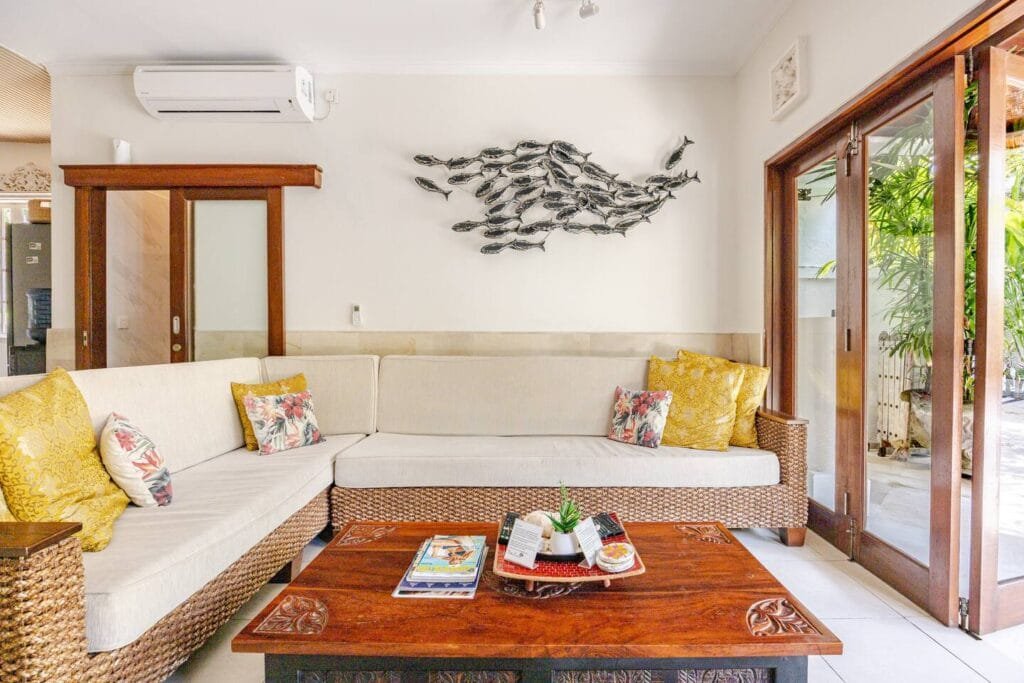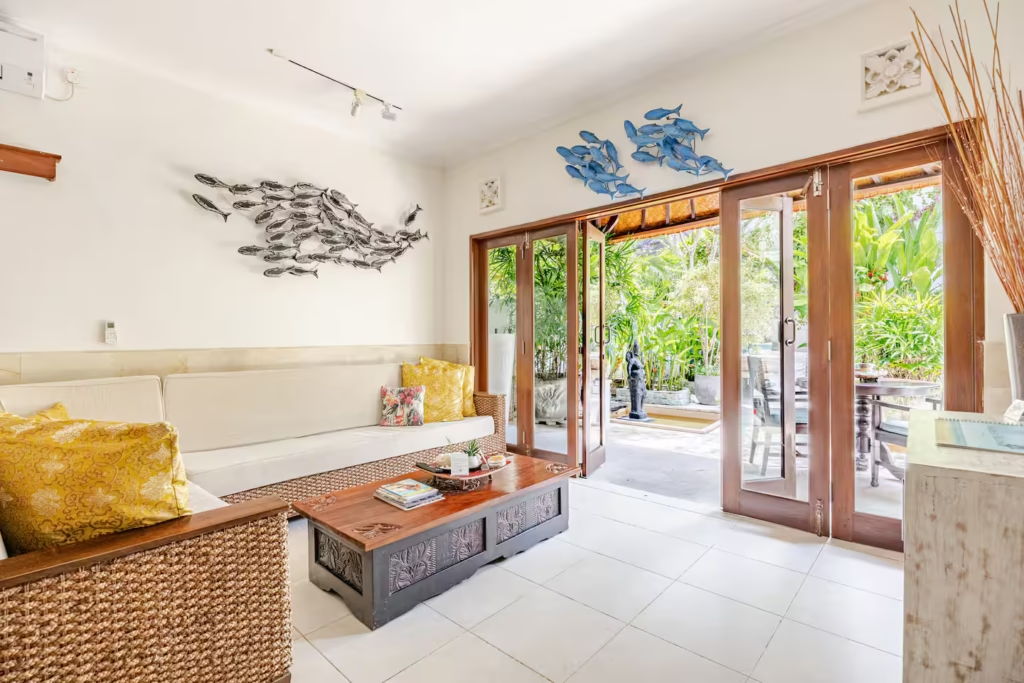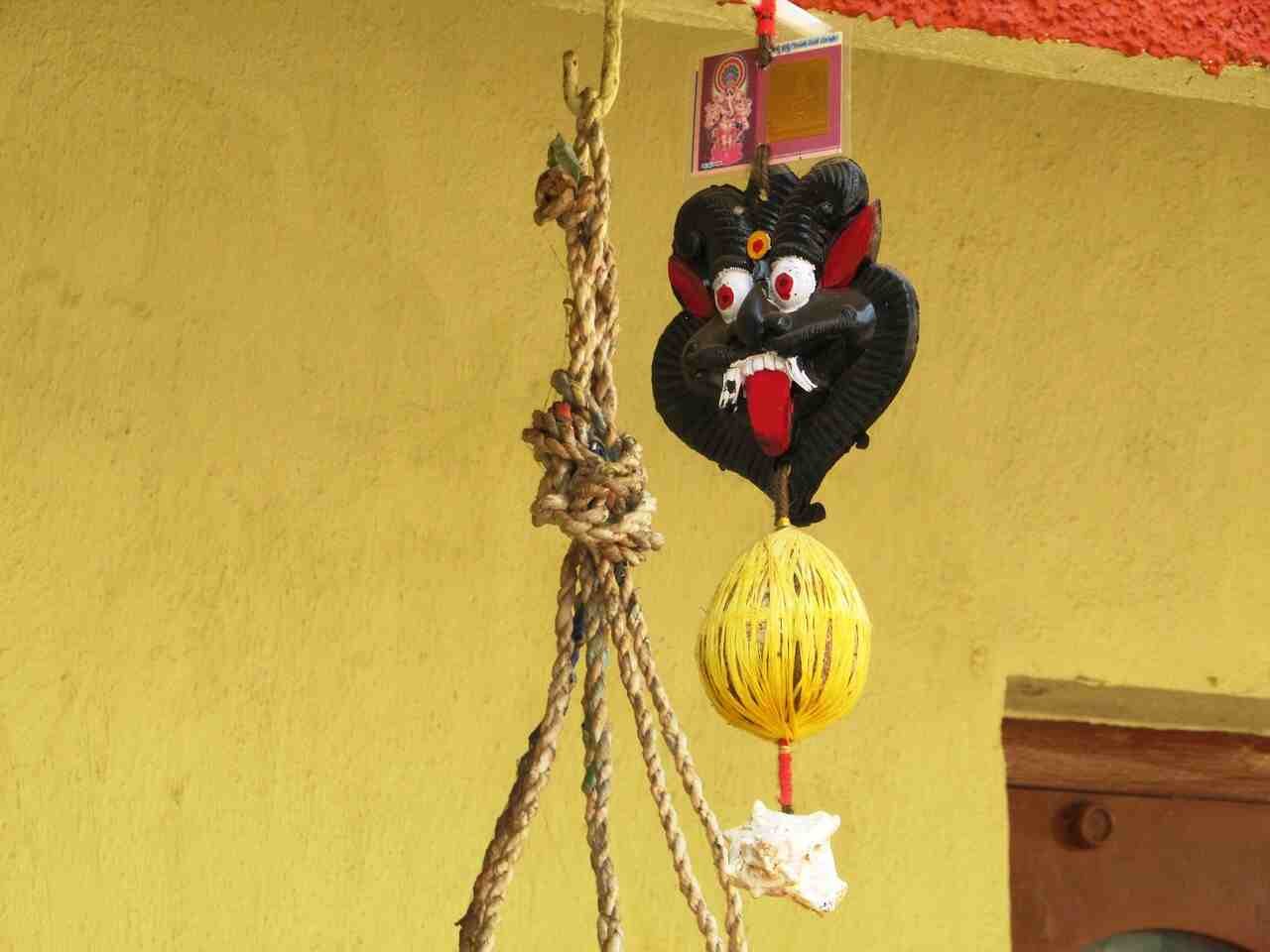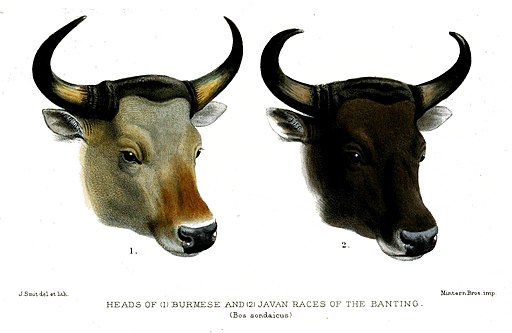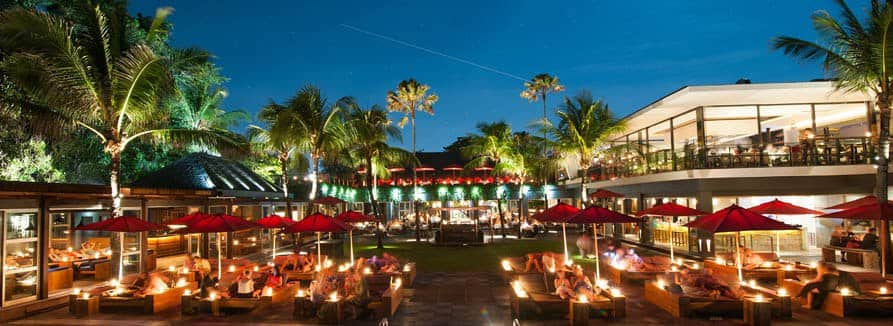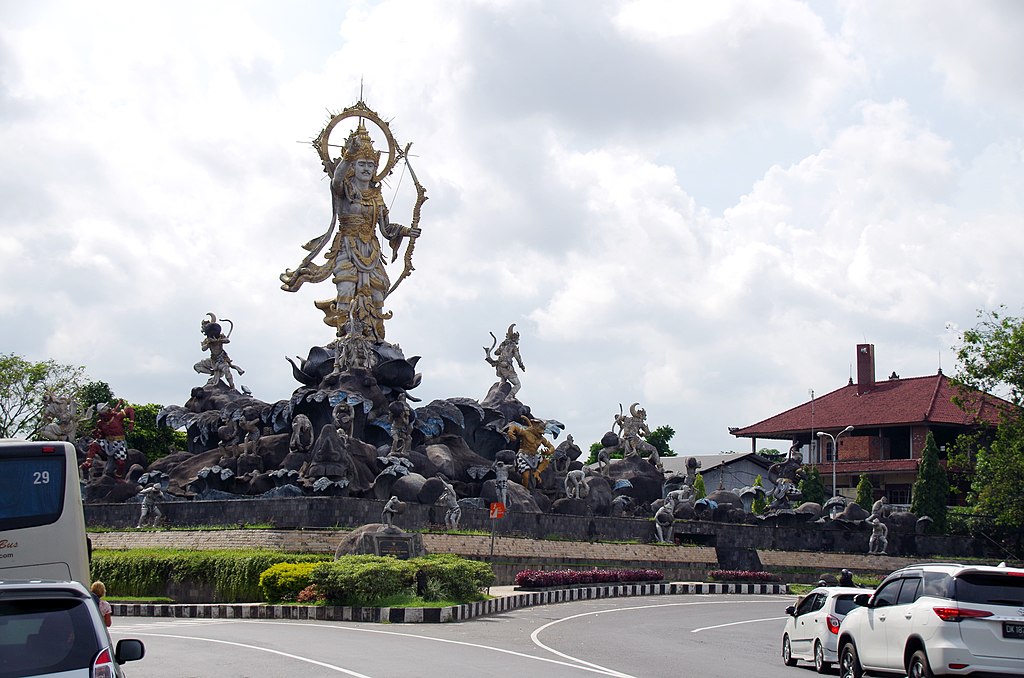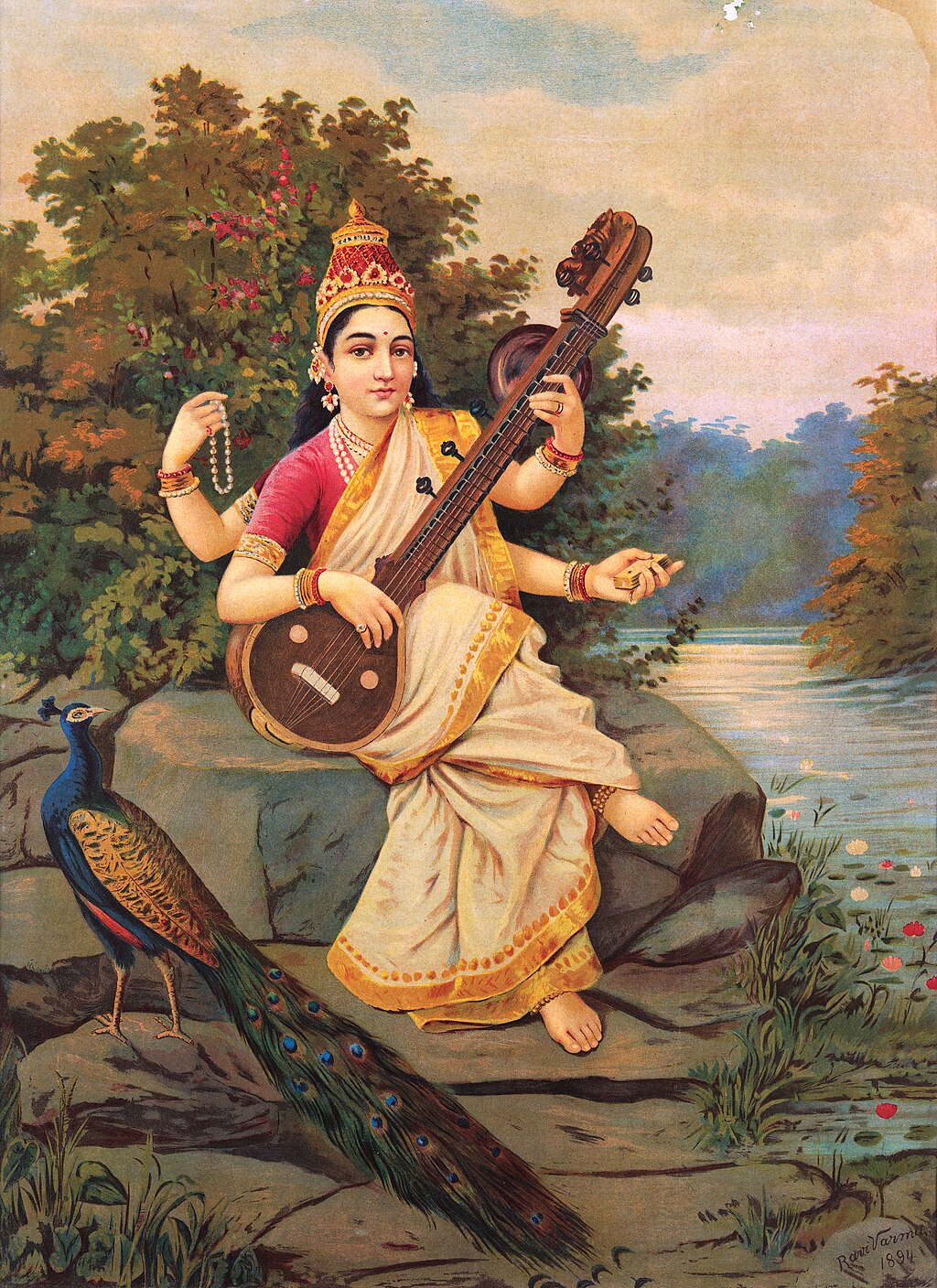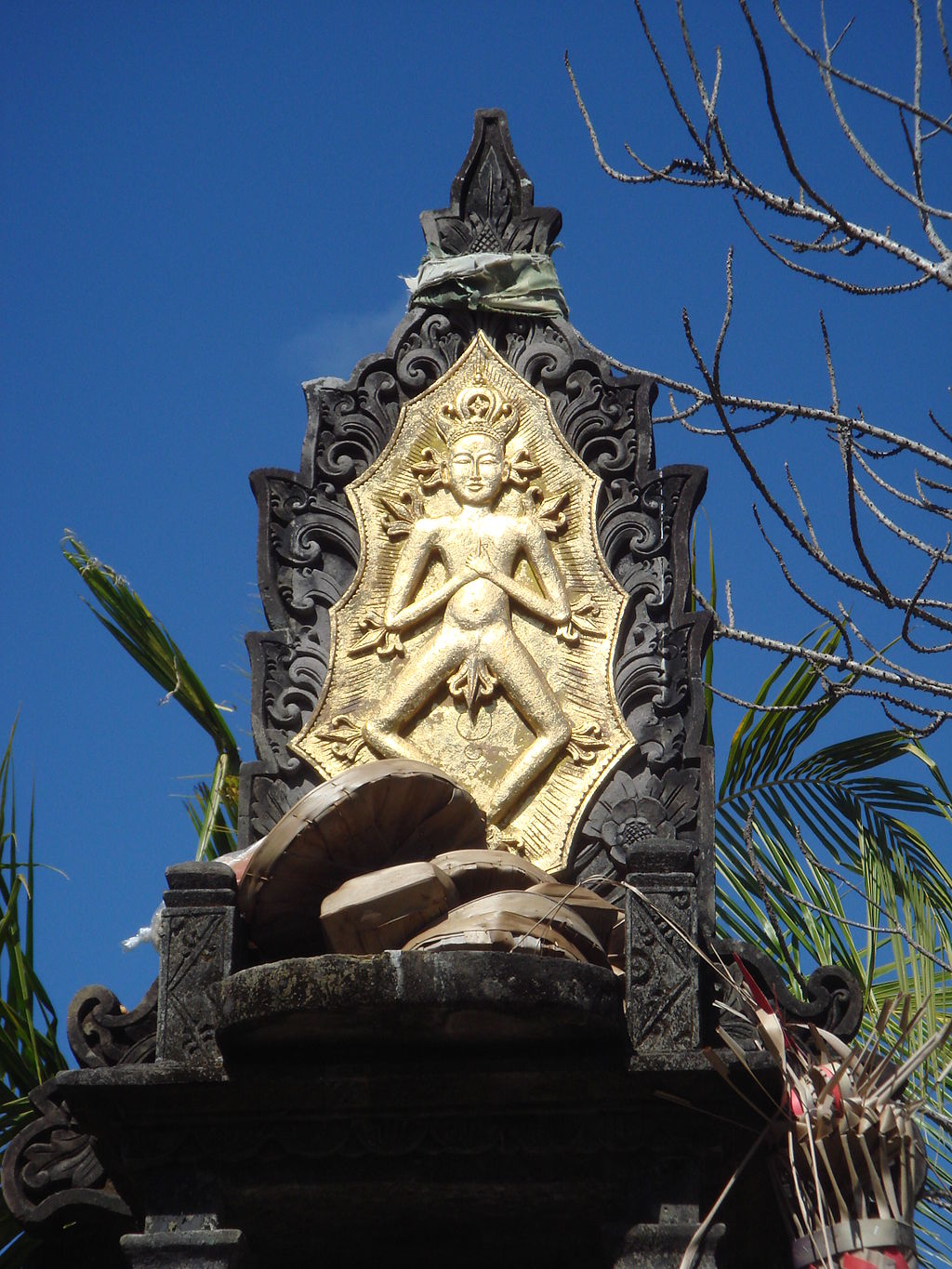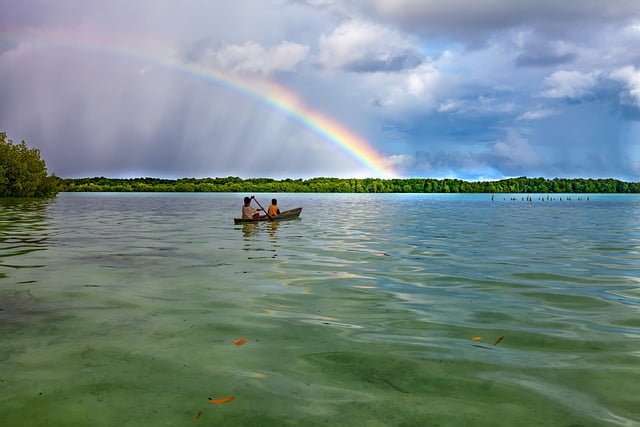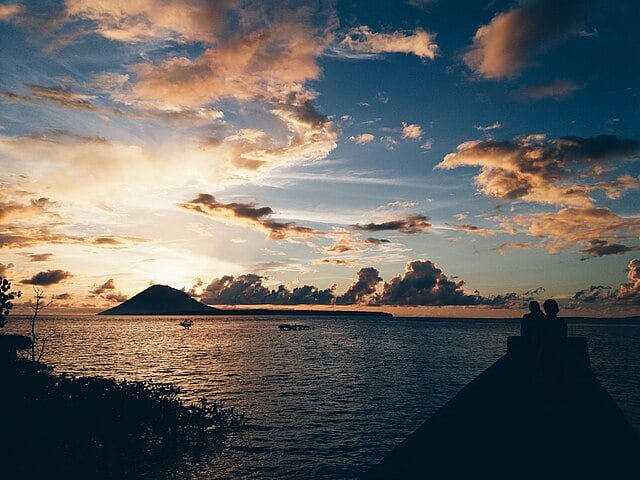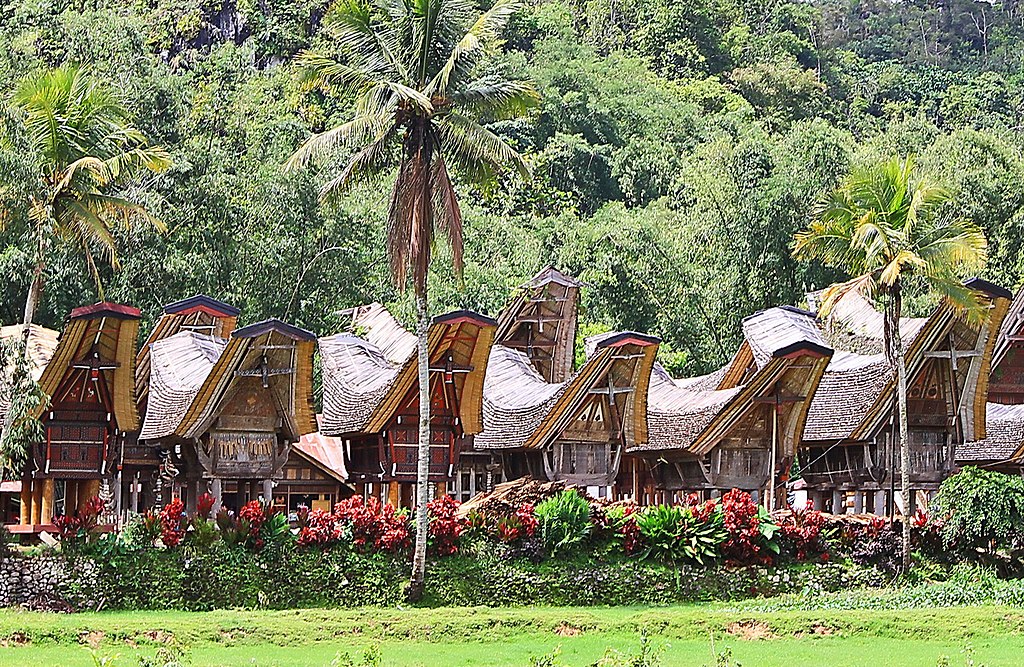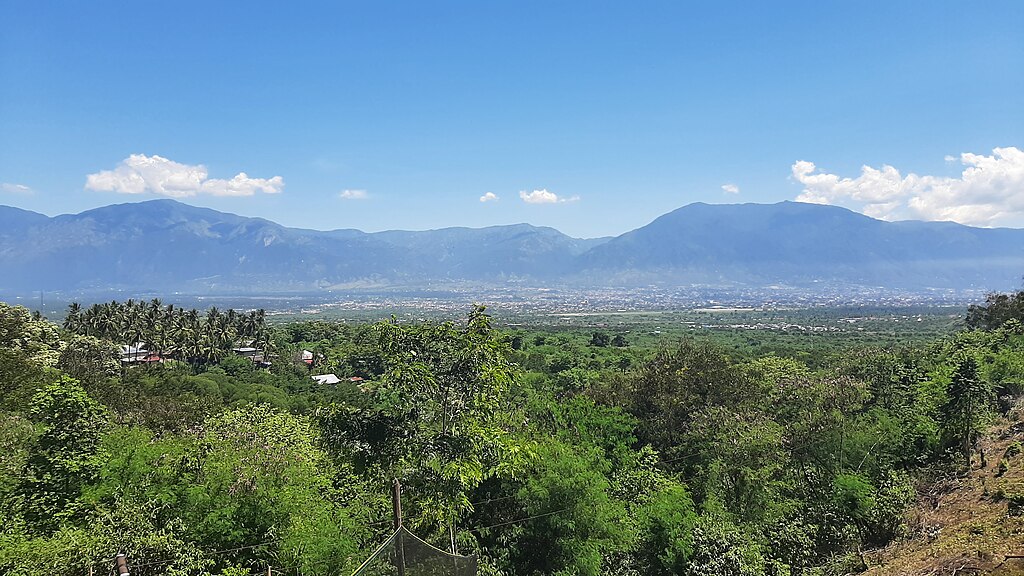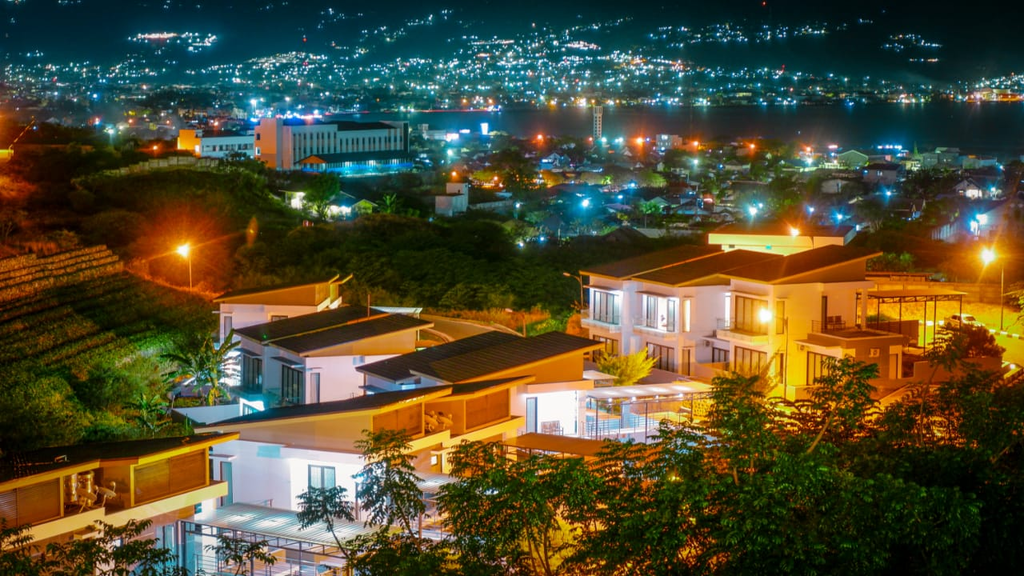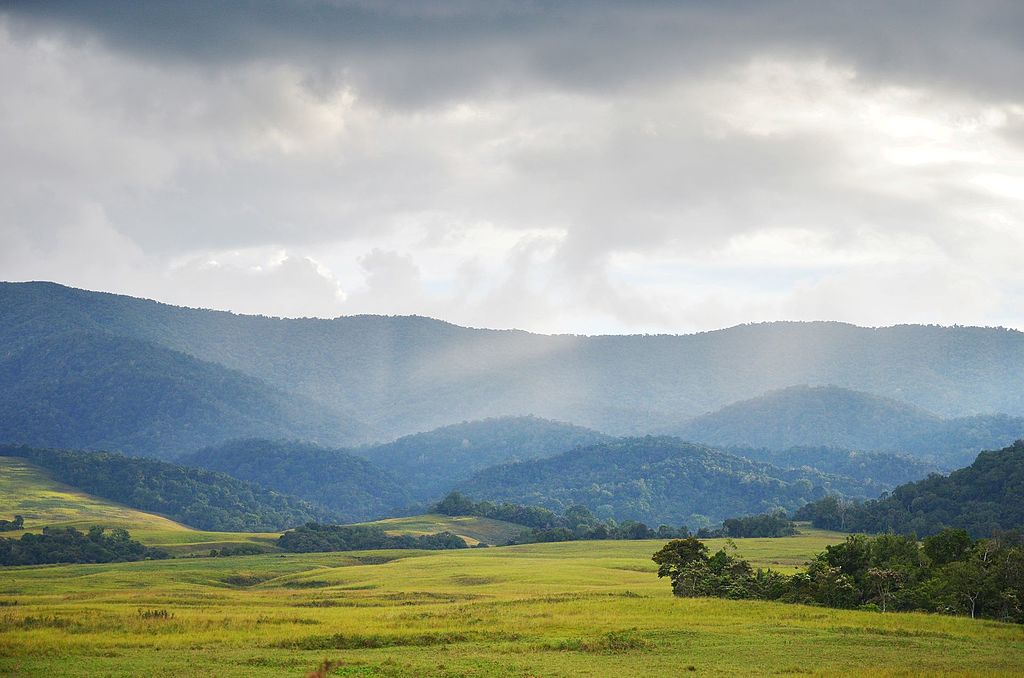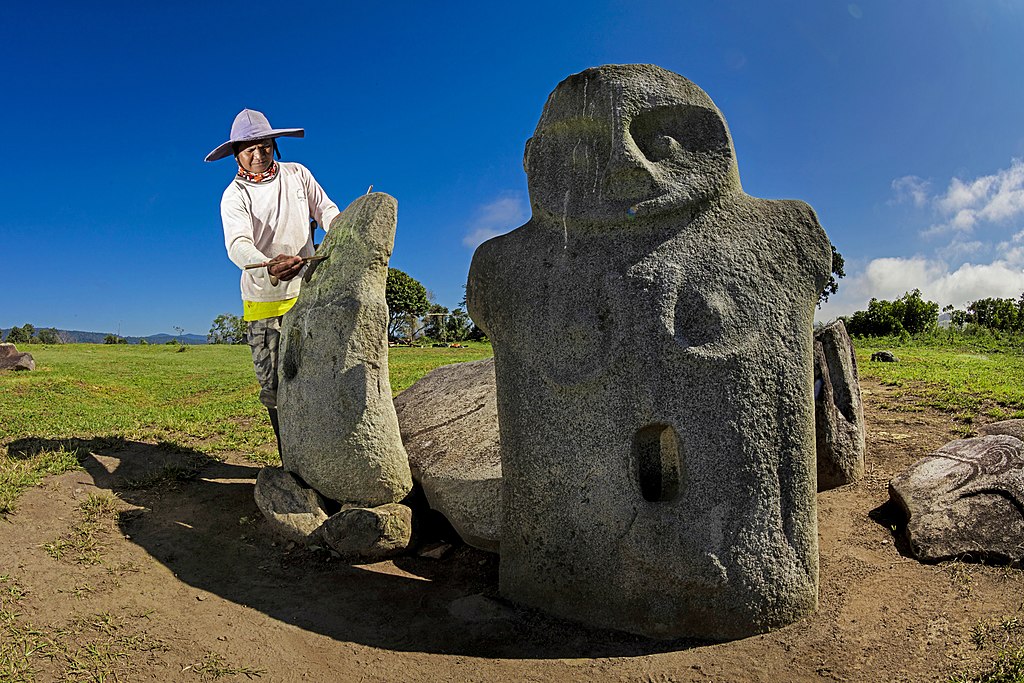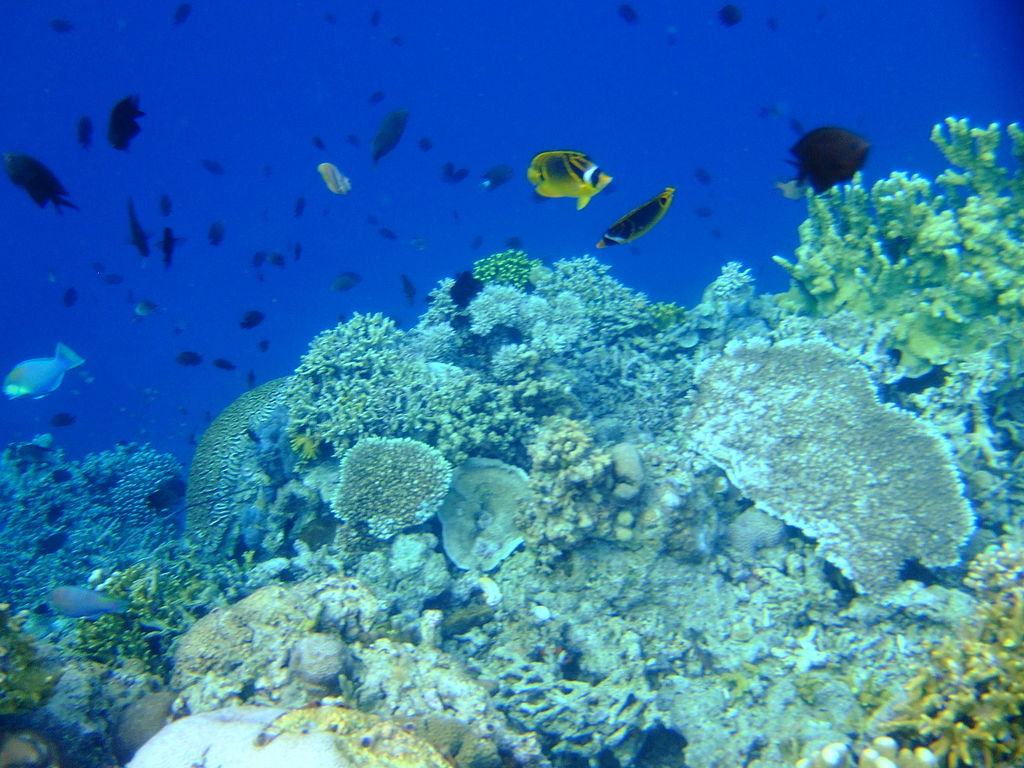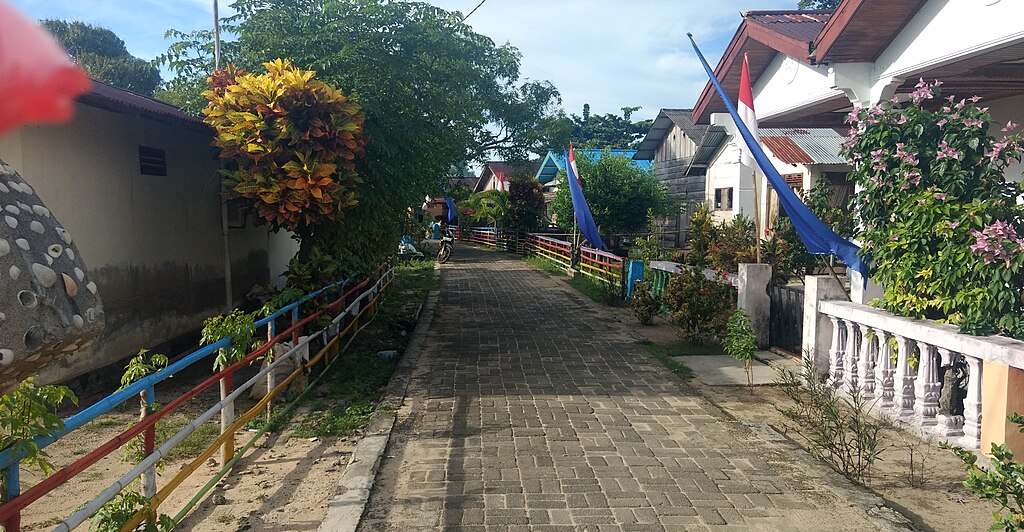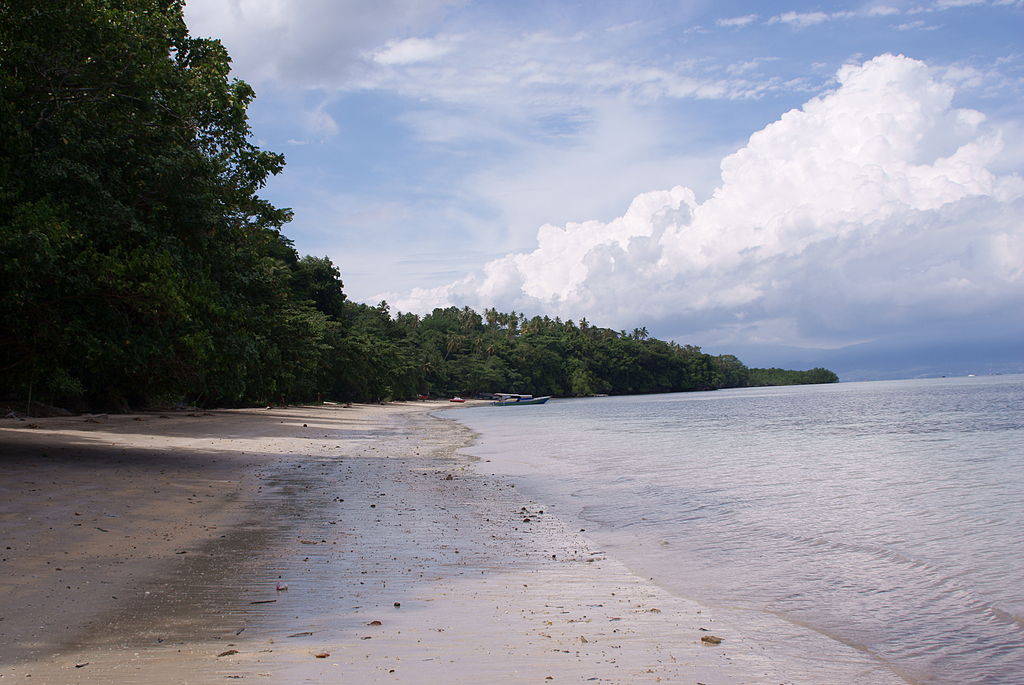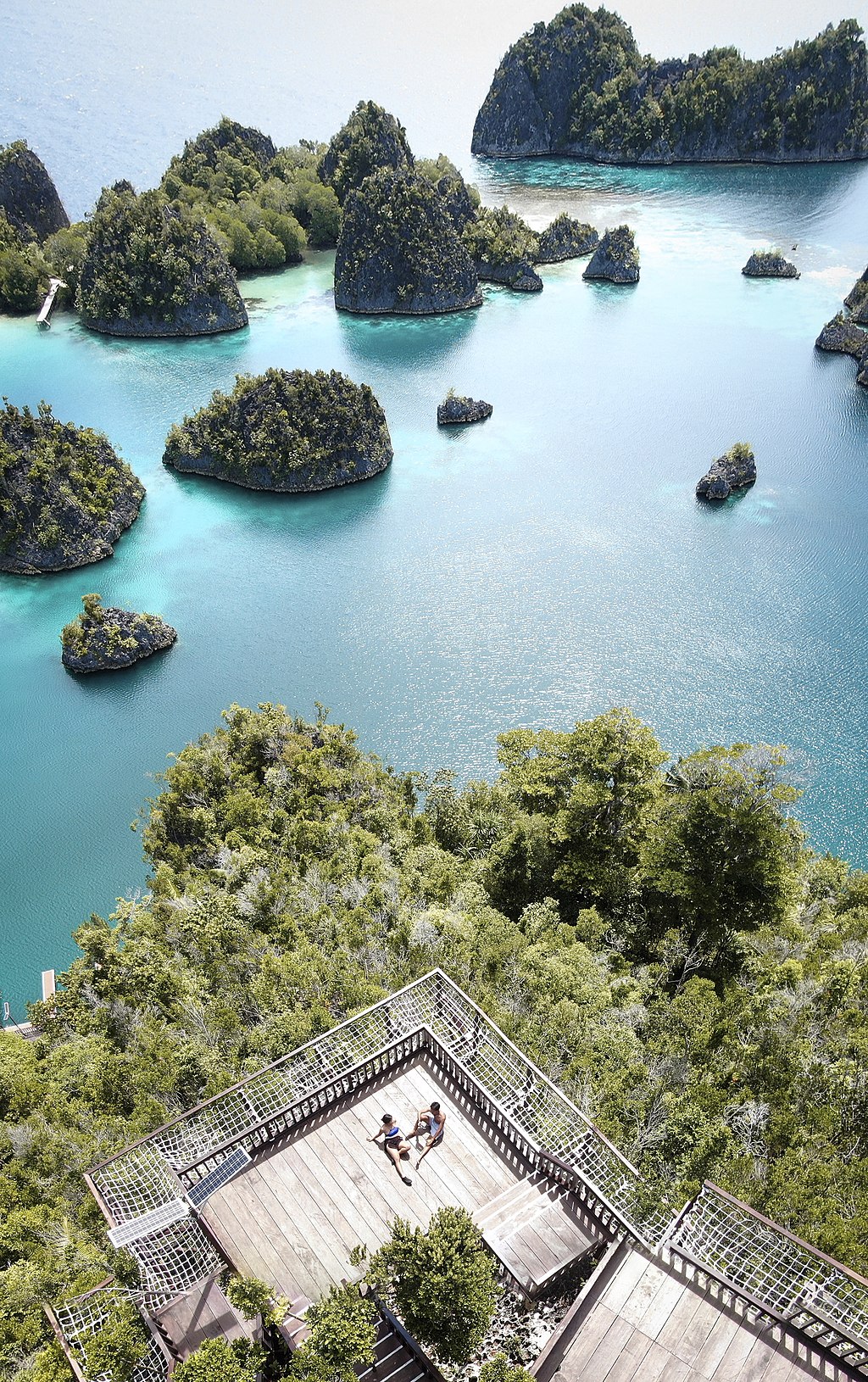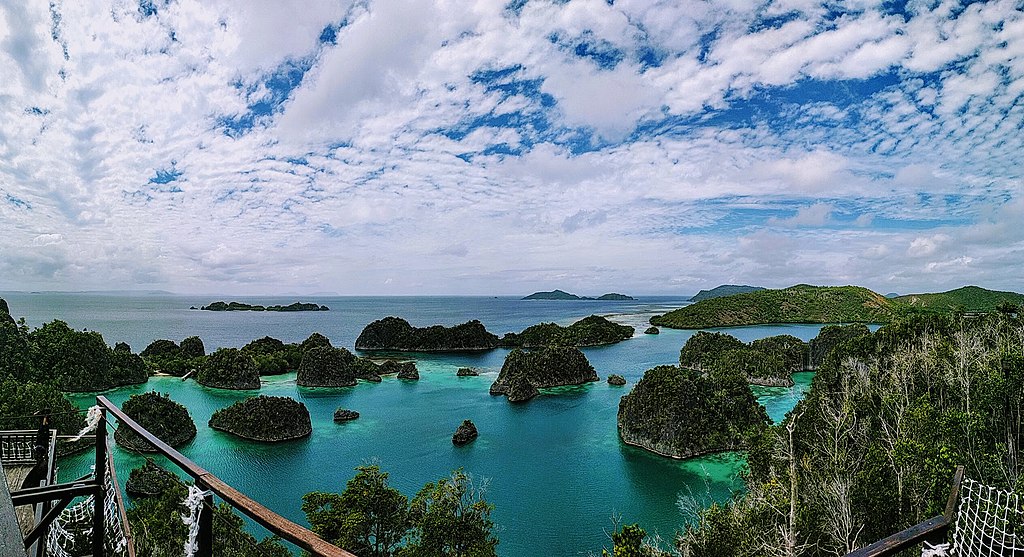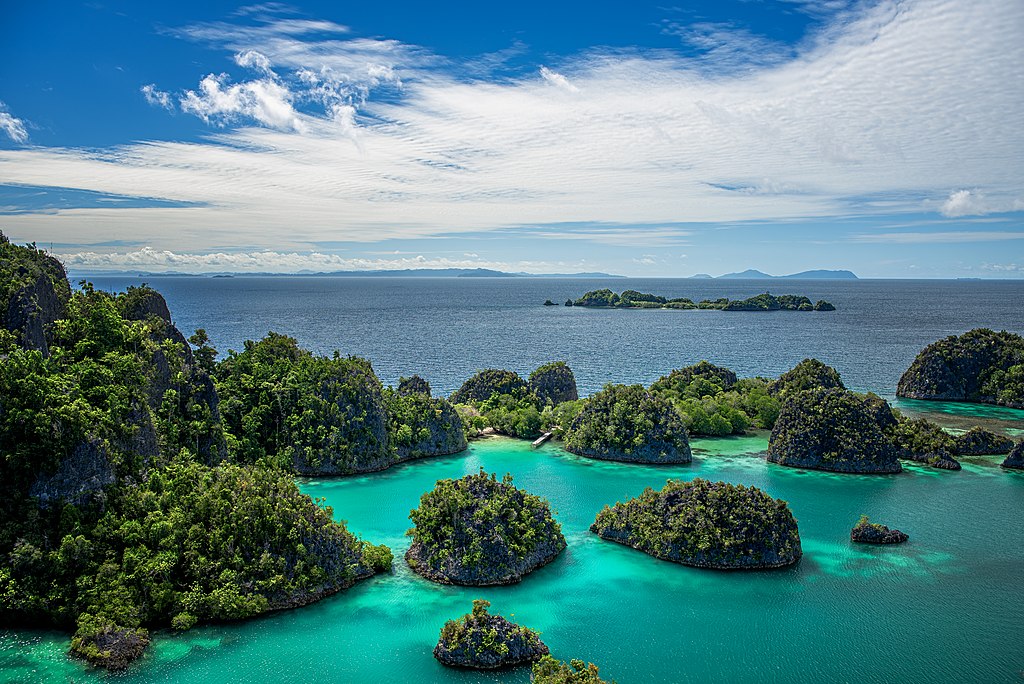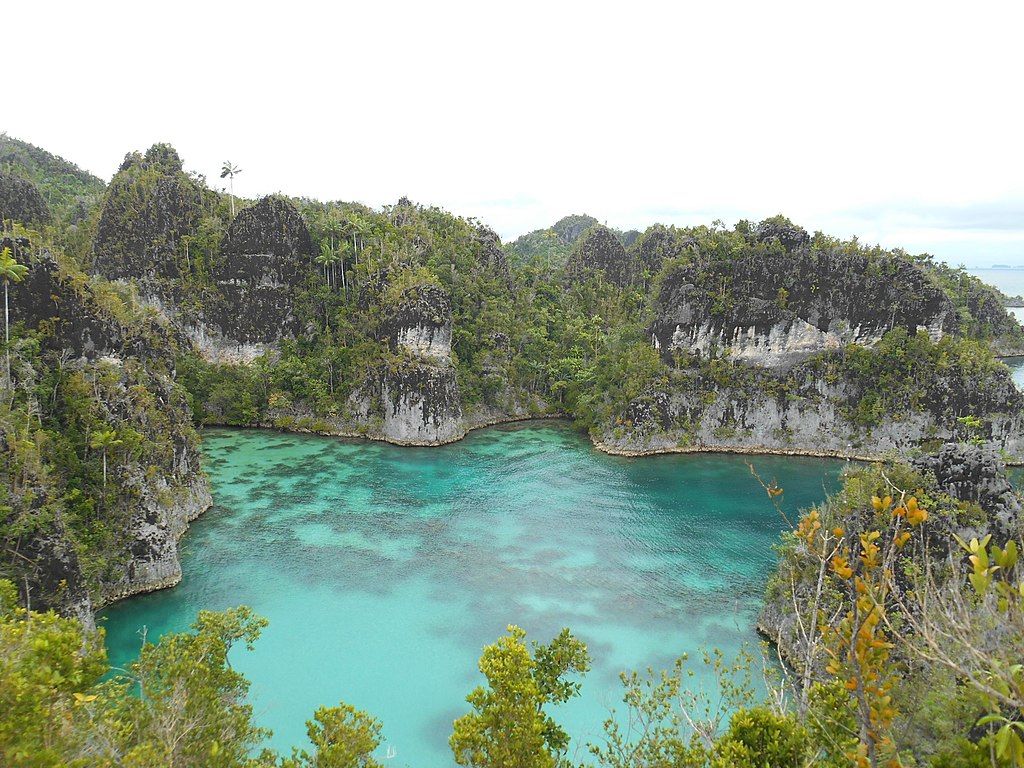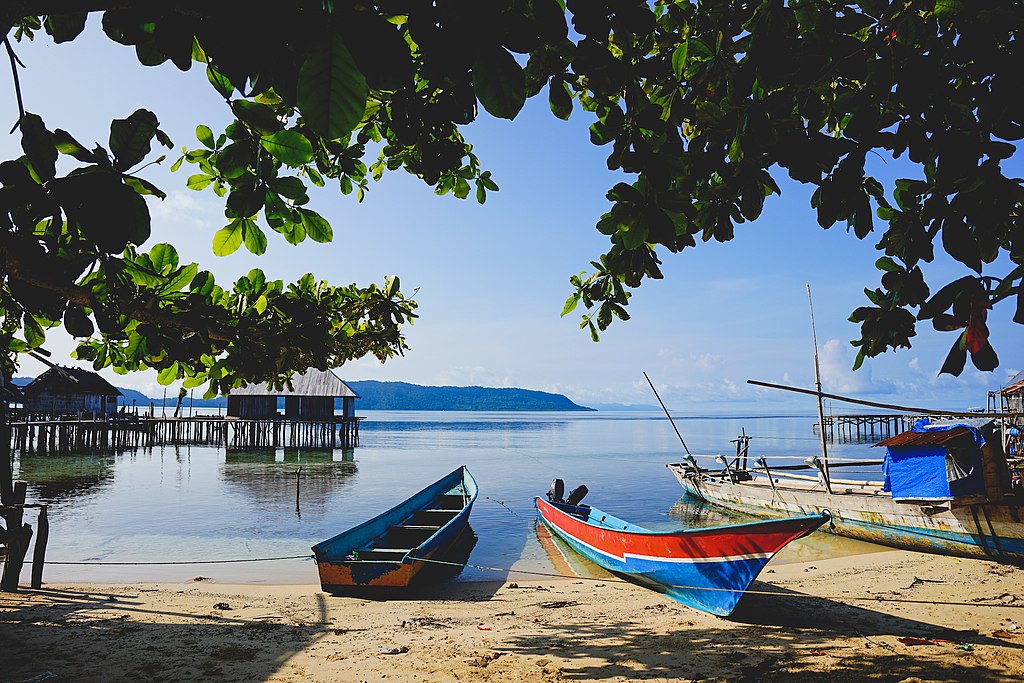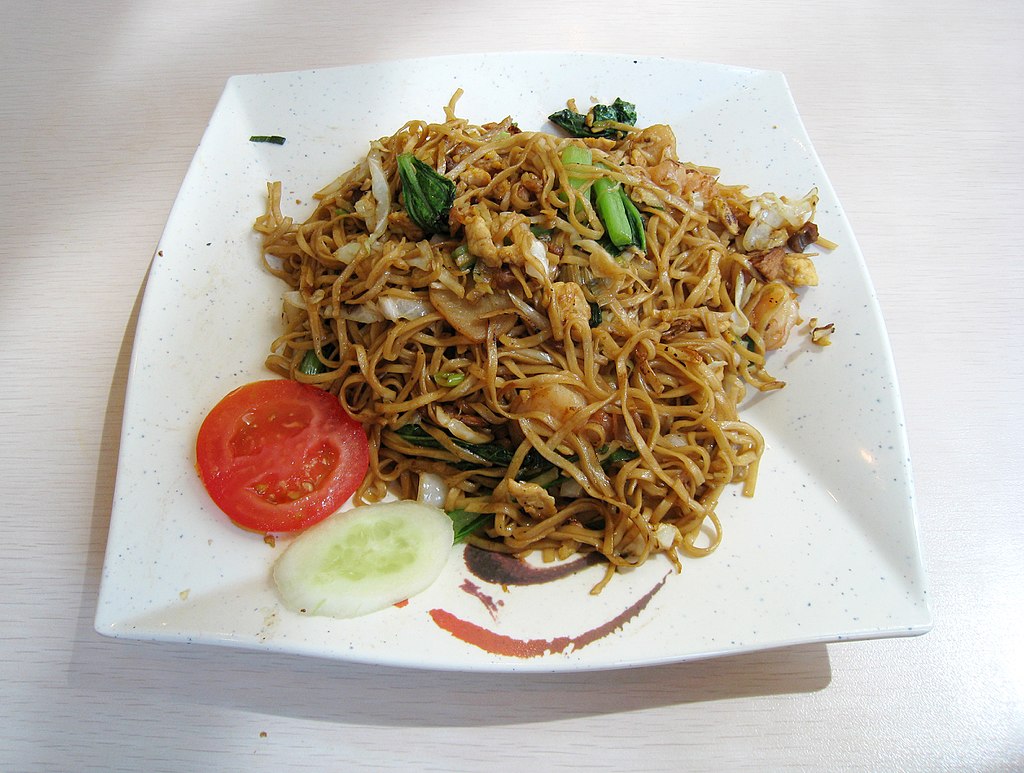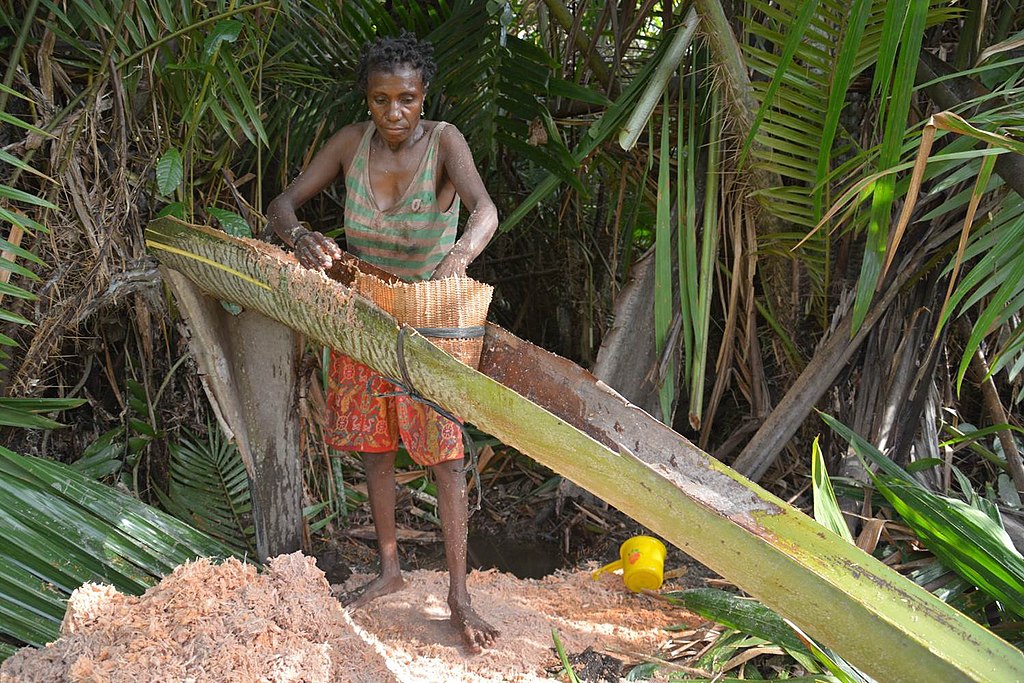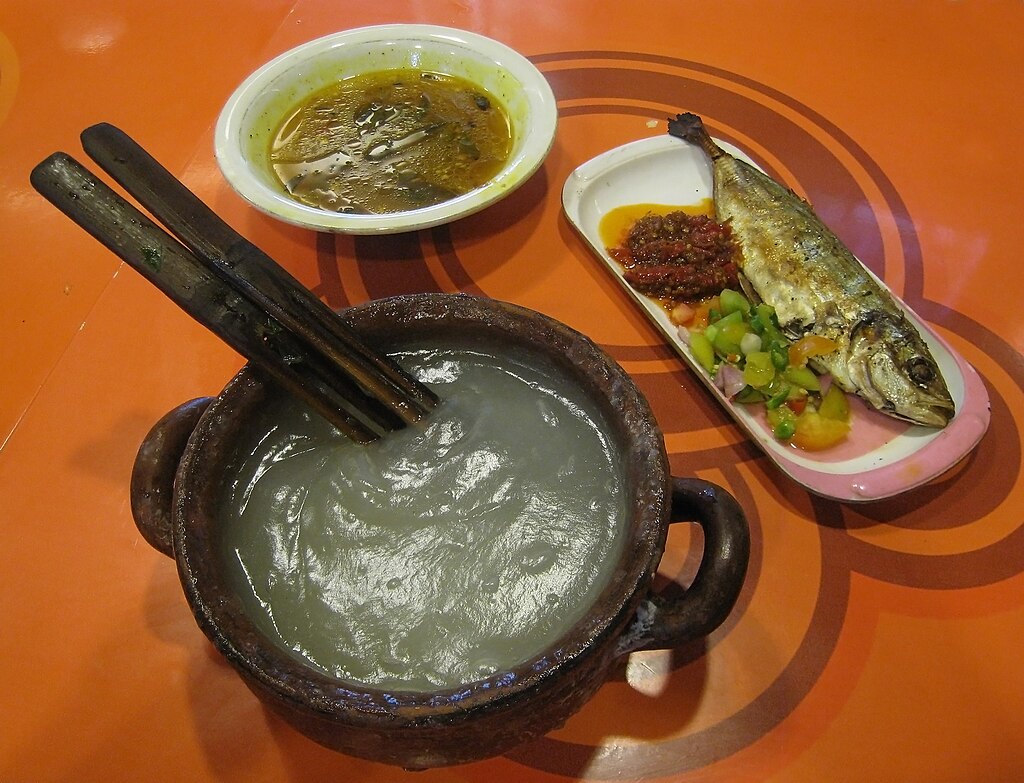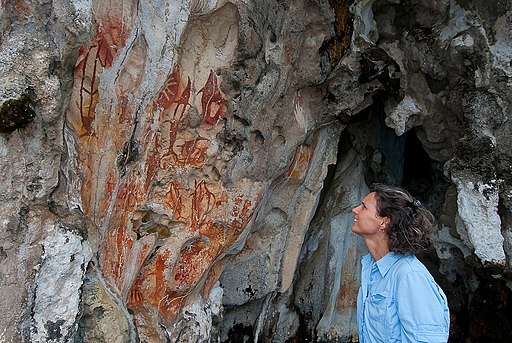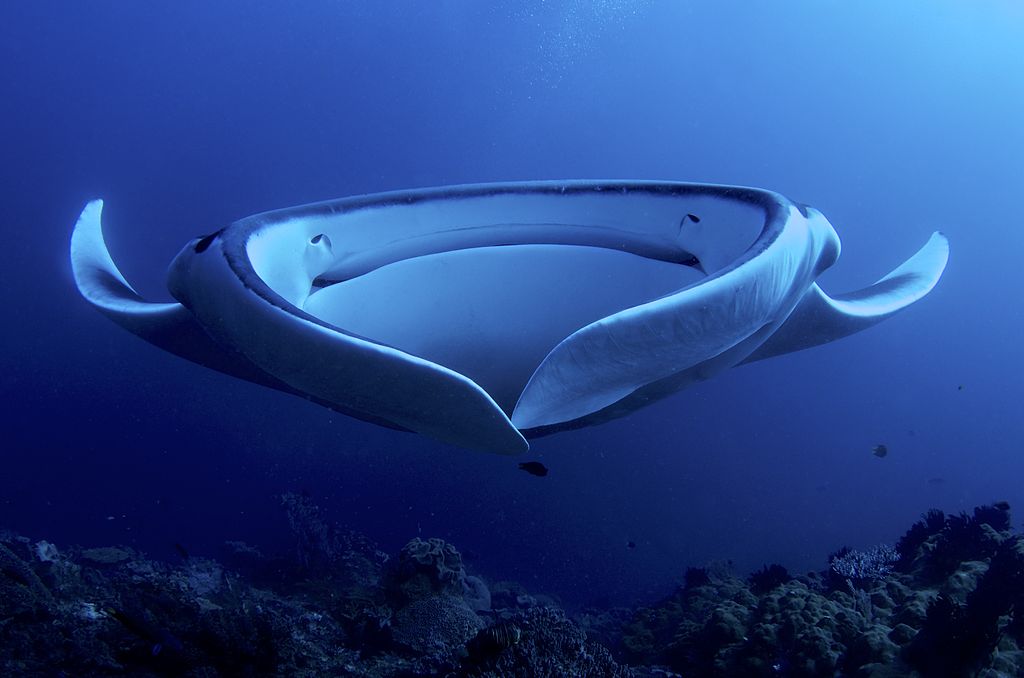Exploring Beautiful Villages in Bali: Discovering Scenic Gems Across the Island’s South, North, East, and West
The Beautiful Villages in Bali, each offering a glimpse into the island’s cultural richness, picturesque landscapes, and authentic way of life. Beyond the bustling tourist hotspots, Bali’s captivating villages unveil a serene world of traditional artistry, harmonious coexistence with nature, and timeless cultural practices, offering a glimpse into the island’s authentic soul.
Each of these villages offers a distinct glimpse into Bali’s diverse cultural tapestry, natural beauty, and local traditions, inviting travelers to venture beyond the well-trodden paths and explore the lesser-known corners of this enchanting island.

Bali map. Flominator, CC BY-SA 3.0, via Wikimedia Commons
Here is a list of beautiful villages in Bali, with their unique characteristics and attractions:
SOUTH
Venture beyond the bustling tourist hotspots and discover the tranquil charm of South Bali’s captivating villages, where traditional Balinese culture, stunning natural beauty, and serene ambiance await.
Uluwatu (South)
Uluwatu, renowned for its stunning cliffs and majestic views, encompasses various villages along the southern coastline. Explore traditional Balinese villages, witness mesmerizing sunsets at Uluwatu Temple, and discover the thriving surf culture in the area.
Unique Characteristics:
- Dramatic cliffside setting with stunning ocean views
- Renowned for its iconic Pura Luhur Uluwatu temple and breathtaking sunsets
- Home to world-class surf breaks and a vibrant surf scene
- Lively nightlife and entertainment options, including the Kecak Fire Dance and Balinese traditional dance performances

Pura Luhur Uluwatu (Uluwatu Temple, The Sea Temple). Perched majestically atop towering cliffs, Pura Luhur Uluwatu, commonly known as Uluwatu Temple, commands breathtaking views of the Indian Ocean, offering not just a spiritual sanctuary but a visual masterpiece against the backdrop of Bali’s stunning coastline. LBM1948, CC BY-SA 4.0, via Wikimedia Commons
Must-See Attractions:
- Pura Luhur Uluwatu Temple
- Uluwatu Beach
- Bingin Beach
- Dreamland Beach
- Sundays Beach Club
Uluwatu Travel Guide: Must Visit Places Between Temples and Beaches in South Bali
SOUTH WEST
Scattered across Bali’s lush landscapes, a constellation of beautiful villages invites exploration, unveiling a harmonious blend of tradition, artistry, and serene beauty.
Seseh (Southwest)
Seseh presents a serene coastal village atmosphere. Experience rice field vistas, visit traditional temples, and embrace the tranquility of rural life.
Unique Characteristics:
- Tranquil Atmosphere: Seseh Village exudes a tranquil atmosphere, offering a welcome respite from the bustling tourist hubs of South Bali.
- Pristine Beaches and Serene Coastline: Seseh boasts a pristine coastline adorned with secluded beaches, perfect for swimming, sunbathing, and leisurely walks along the shore.
- Cultural Immersion and Traditional Craftsmanship: Immerse yourself in the village’s rich cultural heritage, evident in its traditional Balinese houses, workshops of local artisans, and captivating Kecak dance performances.
- Harmony with Nature: Seseh Village seamlessly blends with the surrounding natural beauty, showcasing lush rice paddies, serene rivers, and the captivating Sunge Rening Waterfall.
Must-See Attractions:
- Seseh Beach: Indulge in a day of relaxation at Seseh Beach, known for its soft white sand, calm waters, and stunning sunsets.
- Sunge Rening Waterfall: Embark on a trek through lush greenery to reach Sunge Rening Waterfall, a cascading waterfall nestled amidst a serene natural setting.
- Seseh Rice Paddies: Stroll through the picturesque Seseh Rice Paddies, where vibrant green terraces stretch across the landscape, offering panoramic views and a glimpse into Bali’s agricultural traditions.
- Seseh Traditional Arts and Crafts Center: Explore the Seseh Traditional Arts and Crafts Center, where local artisans showcase their skills in woodcarving, weaving, and painting.
- Kecak Dance Performance: Witness the captivating Kecak dance performance, an ancient Balinese tradition that combines rhythmic chanting, intricate movements, and a mesmerizing storytelling experience.
Seminyak Village (South West)
The most glamorous village in Bali! You can consider Seminyak like St Tropez in France!
Unique Characteristics:
- Trendy and upscale coastal resort town with a cosmopolitan vibe
- Abundance of luxury hotels, fine dining restaurants, and trendy bars
- Renowned for its vibrant nightlife and beach clubs
- Popular destination for surfing, shopping, and spa treatments
Must-See Attractions:
- Seminyak Beach: A picturesque stretch of golden sand beach, ideal for swimming, sunbathing, and enjoying stunning sunsets.
- Potato Head Beach Club: A renowned beach club known for its stylish ambiance, delectable cuisine, and lively atmosphere.
- KU DE TA: Another iconic beach club, offering a sophisticated dining experience, luxurious accommodations, and a vibrant nightlife scene.
- Seminyak Square: A trendy shopping and dining destination, featuring a collection of upscale boutiques, art galleries, and international restaurants.
- La Plancha Bali: A popular spot for sunset drinks and live music, offering a laid-back bohemian atmosphere with stunning ocean views.
SOUTH EAST
Seek tranquility and immerse yourself in the rich cultural heritage of Southeast Bali’s enchanting villages, nestled amidst lush rice paddies, serene coastlines, and ancient temples.
Southeast Bali is a region of captivating beauty, offering a blend of stunning natural landscapes, rich cultural heritage, and tranquil atmosphere. Nestled between the vibrant tourist hubs of South Bali and the serene landscapes of East Bali, Southeast Bali offers a unique and enchanting experience for visitors seeking a harmonious blend of adventure and relaxation.
Sanur Village (South East)
Family-Friendly Destination: Sanur Village is a haven for families, offering a safe and welcoming environment with plenty of kid-friendly activities and attractions.

As the sun wakes up the sky, painting it in shades of soft pinks and oranges, a special old boat rests on the sand in Sanur, Bali. At sunrise, when the water goes away, this weathered boat sits silently, telling stories of the sea. It’s an old boat, tired but strong, reminding us of the important history of sailing in Bali. Wiaskara, CC BY-SA 4.0, via Wikimedia Commons
Unique Characteristics:
- Relaxed and Tranquil Atmosphere: Sanur Village exudes a relaxed and tranquil atmosphere, offering a welcome respite from the bustling tourist hubs of South Bali.
- Beachfront Charm: Sanur boasts a charming beachfront promenade lined with lush greenery, offering stunning views of the glistening ocean and a laid-back vibe.
- Cultural Heritage and Traditions: Despite its modern amenities, Sanur Village remains deeply rooted in Balinese culture and traditions, evident in its temples, traditional performances, and local artisanship.
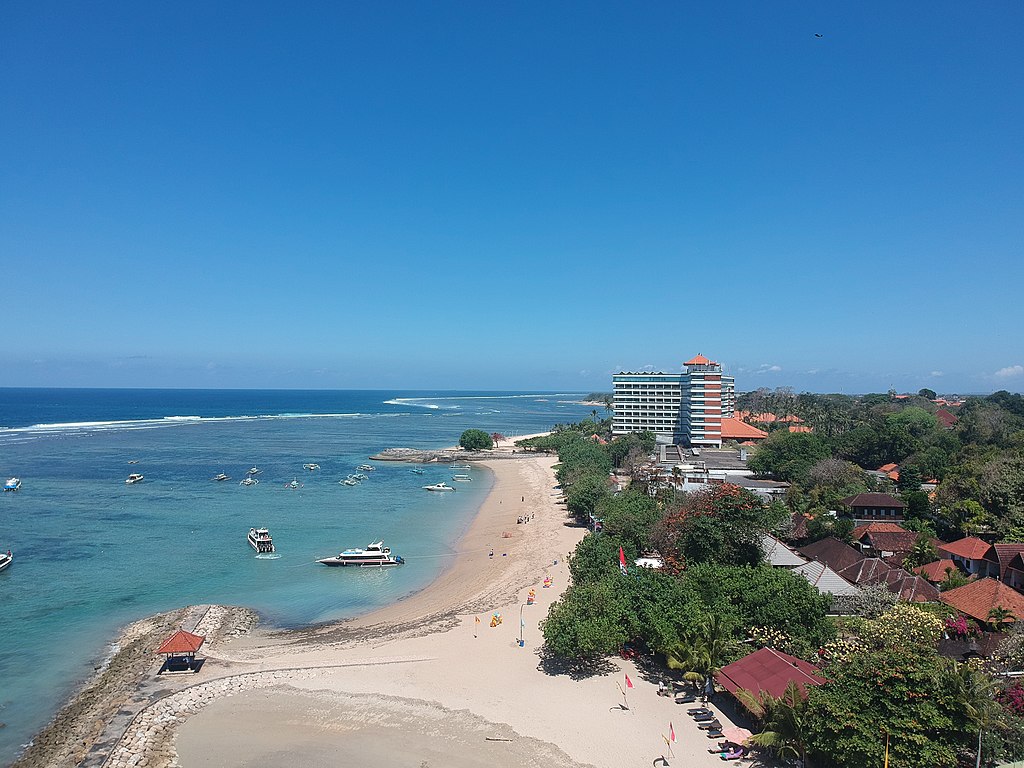
Sanur Beach in Bali is a tranquil haven where the sun-kissed sands meet the gentle embrace of the azure sea. It’s a place where time slows down, inviting you to stroll along the shorelines adorned with swaying palms, while the soft ocean breeze carries whispers of tranquility. Here, the sunrise paints the sky in hues of gold, unveiling a magical spectacle that reflects upon the calm waters, setting the scene for moments of peaceful introspection and seaside bliss. Magul, CC BY-SA 4.0, via Wikimedia Commons
Must-See Attractions:
- Sanur Beach: Indulge in a day of relaxation at Sanur Beach, known for its calm waters, soft white sand, and stunning sunsets.
- Sanur Night Market: Immerse yourself in the vibrant atmosphere of the Sanur Night Market, where you can find local handicrafts, souvenirs, and delectable Balinese cuisine.
- Sindhu Art Gallery: Explore the Sindhu Art Gallery, showcasing an impressive collection of traditional Balinese paintings, sculptures, and artifacts.
- Turtle Conservation and Education Center: Visit the Turtle Conservation and Education Center, where you can learn about the importance of turtle conservation and witness the release of rehabilitated sea turtles.
- Mangrove Forest: Embark on a leisurely stroll through the tranquil Mangrove Forest, a serene ecosystem that supports a variety of birdlife and marine creatures.
Sanur A Seaside Resort in Southeast Corner of Bali, Loaded With History
Padangbai (Southeast)
Padangbai is a charming coastal village famous for its ferry terminal and as a gateway to Lombok. Explore local fishing communities, relax on pristine beaches, and discover the vibrant underwater world for diving enthusiasts.
Unique Characteristics:
- Gateway to Lombok and Nusa Lembongan, offering convenient ferry connections
- Idyllic coastal town with a relaxed atmosphere and stunning ocean views
- Renowned for its snorkeling and diving spots, offering a glimpse into Bali’s vibrant marine life
- Home to peaceful beaches and a laid-back coastal lifestyle

Nestled along Bali’s eastern coast, Padangbai Harbour is a bustling maritime gateway that intertwines traditional charm with modern vibrancy. The harbor hums with the energy of fishing boats and ferries, their sails dancing against the backdrop of cerulean waters. It’s a bustling scene where the salty ocean air mingles with the sounds of seafaring life, welcoming travelers to embark on maritime adventures or witness the daily rhythms of coastal livelihoods. Amidst the comings and goings, Padangbai Harbour exudes an authentic maritime ambiance that encapsulates Bali’s coastal essence. Magul, CC BY-SA 4.0, via Wikimedia Commons
Must-See Attractions:
- Padangbai Beach
- Blue Lagoon Beach
- Bias Mentah Beach
- Pura Goa Lawah Temple
- Padangbai Mangrove Forest
Nusa Lembongan (Southeast)
Nusa Lembongan offers a tranquil island escape. Experience the local island life, explore pristine beaches, and engage in snorkeling or diving adventures.
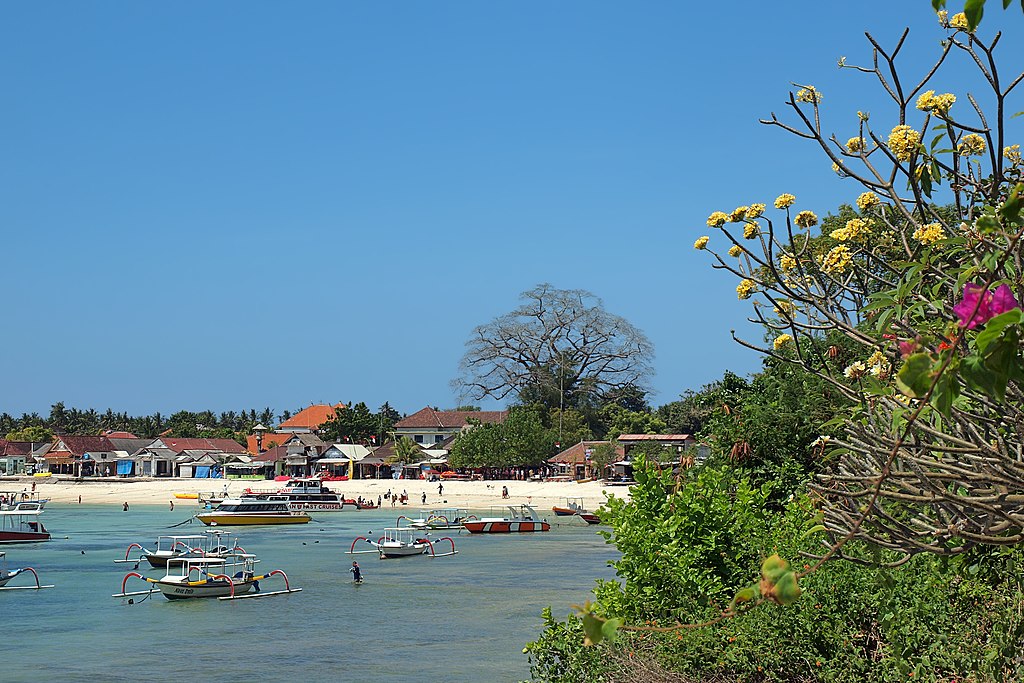
The northern coast of Nusa Lembongan paints a breathtaking scene, with the quaint Lembongan village nestled against a backdrop of lush greenery. Here, the turquoise waters gently embrace the rugged coastline, where traditional boats sway gracefully, reflecting the island’s maritime heritage. Against the canvas of rolling hills, the village stands as a testament to simple coastal life, where the whispers of ocean waves harmonize with the tranquility of the landscape, inviting travelers to embrace the unspoiled beauty and laid-back ambiance of this Balinese paradise. © Jose Mario Pires (CC BY-SA 4.0) via Wikimedia Commons
Unique Characteristics
- Tranquil Atmosphere: Nusa Lembongan offers a tranquil and laid-back atmosphere, perfect for those seeking an escape from the hustle and bustle of Bali’s more touristy areas.
- Pristine Beaches: The island is renowned for its pristine beaches, with soft white sand and crystal-clear turquoise waters, ideal for swimming, sunbathing, and surfing.
- Abundant Marine Life: Nusa Lembongan is a haven for snorkeling and diving enthusiasts, with vibrant coral reefs teeming with diverse marine life, including colorful fish, turtles, and manta rays.
- Nusa Lembongan Mangrove Forest: Explore the lush mangrove forest, a unique ecosystem that supports a variety of birdlife and marine creatures.
Must-See Attractions
- Mushroom Bay Beach: Indulge in a day of relaxation and water activities at Mushroom Bay Beach, known for its calm waters and stunning sunsets.
- Dream Beach: Discover the secluded Dream Beach, a hidden gem with soft sand and a tranquil atmosphere.
- Manta Point: Embark on a manta ray snorkeling or diving tour at Manta Point, renowned for its frequent encounters with these majestic creatures.
- Jungut Batu Cliffs: Witness the impressive Jungut Batu Cliffs, sculpted by natural forces over millennia, offering breathtaking views of the coastline.
- Nusa Lembongan Devil’s Tears: Experience the mesmerizing Devil’s Tears, a natural rock formation that shoots water jets into the air, creating a dramatic spectacle.
Nusa Lembongan or Nusa Penida | What to choose between the two islands?
Kusamba (Southeast)
Kusamba offers insights into traditional salt farming and fishing villages. Experience salt harvesting activities, witness the local fishing trade, and enjoy the serene coastal ambiance.
Unique Characteristics:
- Coastal village renowned for its traditional salt-making practices
- Peaceful atmosphere with a blend of Balinese culture and natural beauty
- Beaches with black volcanic sand and crystal-clear waters
- Home to several temples and cultural attractions, showcasing Balinese heritage

Nestled along Bali’s eastern coast, the quaint Kusamba Village stands as a testament to traditional salt-making practices, where the salt makers of Kusamba meticulously harvest sea salt, preserving age-old techniques that echo the timeless essence of Balinese coastal heritage. Wiaskara, CC BY-SA 4.0, via Wikimedia Commons
Must-See Attractions:
- Kusamba Beach
- Kusamba Salt Pans
- Goa Lawah Temple
- Pura Dalem Pingit
- Kusamba Art Market
Klungkung (Southeast)
Klungkung invites visitors to explore traditional Balinese architecture and historical sites such as the Klungkung Palace and Kerta Gosa, showcasing intricate artwork and ancient storytelling traditions.
Unique Characteristics:
- Former royal capital of Bali, steeped in rich history and culture
- Home to the iconic Goa Gajah Elephant Cave, a captivating Hindu temple complex
- Center for traditional Balinese dance and music performances
- Serene atmosphere with a blend of ancient traditions and modern life
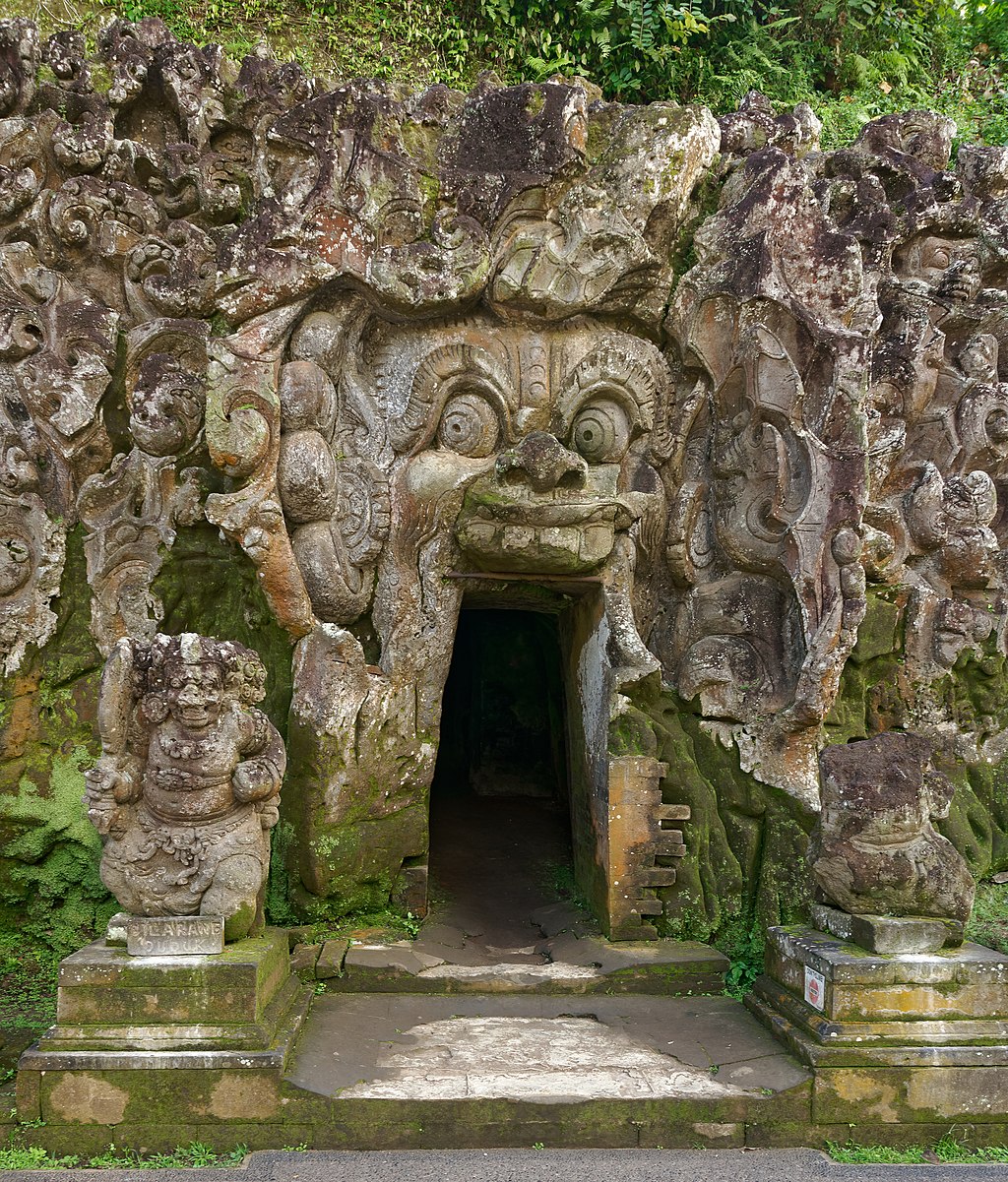
Nestled in the serene Bedulu village near Ubud, Bali, the mystical Goa Gajah cave, also known as the Elephant Cave, beckons visitors into an ancient realm of spirituality and mystery. This sacred site transcends time, revealing intricate carvings, serene meditation spaces, and a profound sense of historical significance, captivating all who venture into its mystical depths. Jakub Hałun, CC BY-SA 4.0, via Wikimedia Commons

As you step into the heart of Goa Gajah (Elephant Cave), nestled within Bedulu village near Ubud, Bali, a mesmerizing tableau unfolds. Inside this ancient sanctuary, intricate stone carvings adorn the walls, whispered tales of bygone eras echo through its cavernous chambers, and a palpable aura of spiritual reverence envelops every visitor, inviting them to delve into the enigmatic depths of Bali’s history and culture. Jakub Hałun, CC BY-SA 4.0, via Wikimedia Commons
Must-See Attractions:
- Goa Gajah Elephant Cave
- Pura Dalem Agung
- Semarajapura Palace
- Taman Nusa Cultural Park
- Gelgel Beach
Sustainable Travel Options in Bali: Minimize Your Footprint, Maximize Your Experience
SOUTH WEST
Venture beyond the bustling tourist hotspots and uncover the tranquil charm of Southwest Bali’s enchanting villages, where traditional Balinese culture, stunning natural beauty, and serene ambiance await.
Canggu (Southwest)
Canggu, situated in the southwest, is a vibrant village known for its laid-back vibe and rice field vistas. Discover the Balinese way of life, explore local markets, and embrace the thriving arts scene in this scenic village.
Unique Characteristics:
- A vibrant coastal town with a laid-back bohemian vibe
- Renowned for its surf scene, attracting surfers of all levels
- Abundance of trendy cafes, restaurants, and bars serving diverse cuisines
- Lively nightlife and entertainment options, including beach clubs, live music venues, and art galleries
- A hub for wellness and spirituality, with numerous yoga studios, meditation centers, and holistic retreats
Must-See Attractions:
- Canggu Beach: A picturesque stretch of black sand beach, ideal for swimming, surfing, sunbathing, and enjoying stunning sunsets.
- Echo Beach: A popular surfing spot, known for its consistent waves and lively atmosphere.
- Batu Bolong Temple: A revered Hindu temple perched on a rock formation in the ocean, offering breathtaking views of the coastline.
- Canggu Art Scene: Explore the numerous art galleries and workshops in Canggu, showcasing the works of local and international artists.
- Wellness and Spirituality: Immerse yourself in Canggu’s vibrant wellness scene, with yoga studios, meditation centers, and a variety of holistic treatments.
Pecatu (Southwest)
Pecatu boasts stunning cliff-top vistas and cultural villages. Explore local traditions, visit the Uluwatu Temple, and witness the breathtaking views overlooking the Indian Ocean.
Unique Characteristics:
- Home to the iconic Uluwatu Temple, a must-see destination for its stunning sunsets and cliffside setting
- Renowned for its world-class surf breaks and vibrant surf culture
- Lively nightlife and entertainment options, including the Kecak Fire Dance and Balinese traditional dance performances
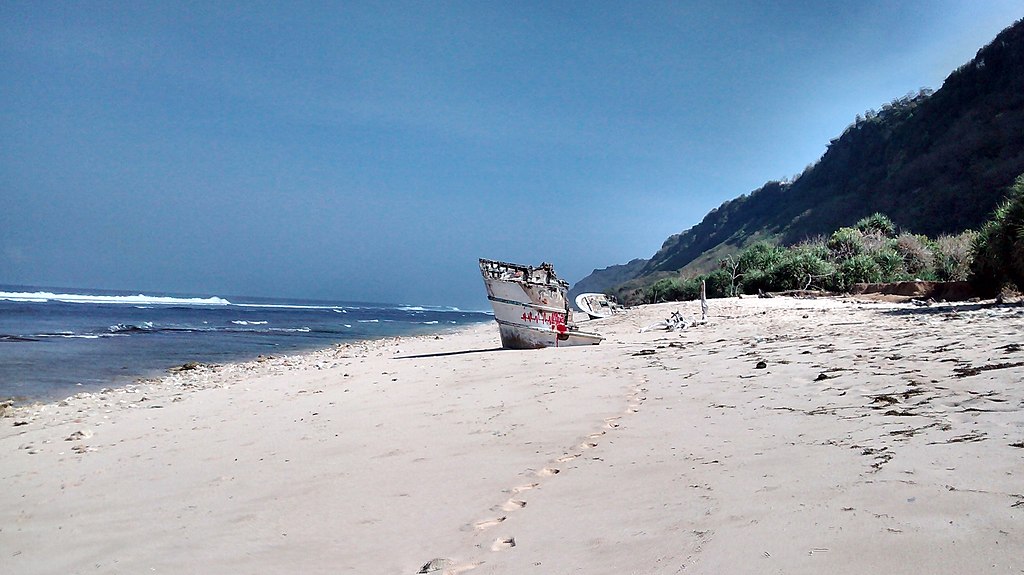
Nestled within Bali’s vibrant landscapes, the Pecatu village beckons with a captivating blend of tradition and contemporary allure. Surrounded by verdant hills and the azure hues of the Indian Ocean, Pecatu exudes a serene charm, where the echoes of ancient customs harmonize with the modern pulse of Bali’s southern coast. It’s a haven where cultural richness intertwines effortlessly with the allure of coastal living, inviting visitors to delve into the authentic essence of Balinese life while savoring the tranquility of this picturesque village. F-GSPY, CC BY 3.0, via Wikimedia Commons
Must-See Attractions:
- Pura Luhur Uluwatu Temple
- Uluwatu Beach
- Padang Padang Beach
- Dreamland Beach
- Bingin Beach
Uluwatu Travel Guide: Must Visit Places Between Temples and Beaches in South Bali
WEST
Escape to West Bali’s serene villages, where national parks, black sand beaches, and harmonious coexistence with nature offer a tranquil retreat and a glimpse into Bali’s unspoiled beauty.
Embrace the laid-back bohemian vibe of West Bali’s coastal villages, where world-class surf breaks, pristine beaches, and ancient burial customs offer an unforgettable blend of adventure and tradition.
Penglipuran Village (West)
Nestled amidst the lush greenery of Bangli Regency, Penglipuran Village stands as an epitome of traditional Balinese architecture and environmental consciousness. This captivating village is celebrated for its unique Tri Hita Karana philosophy, which emphasizes harmony between humans, nature, and the spiritual realm.
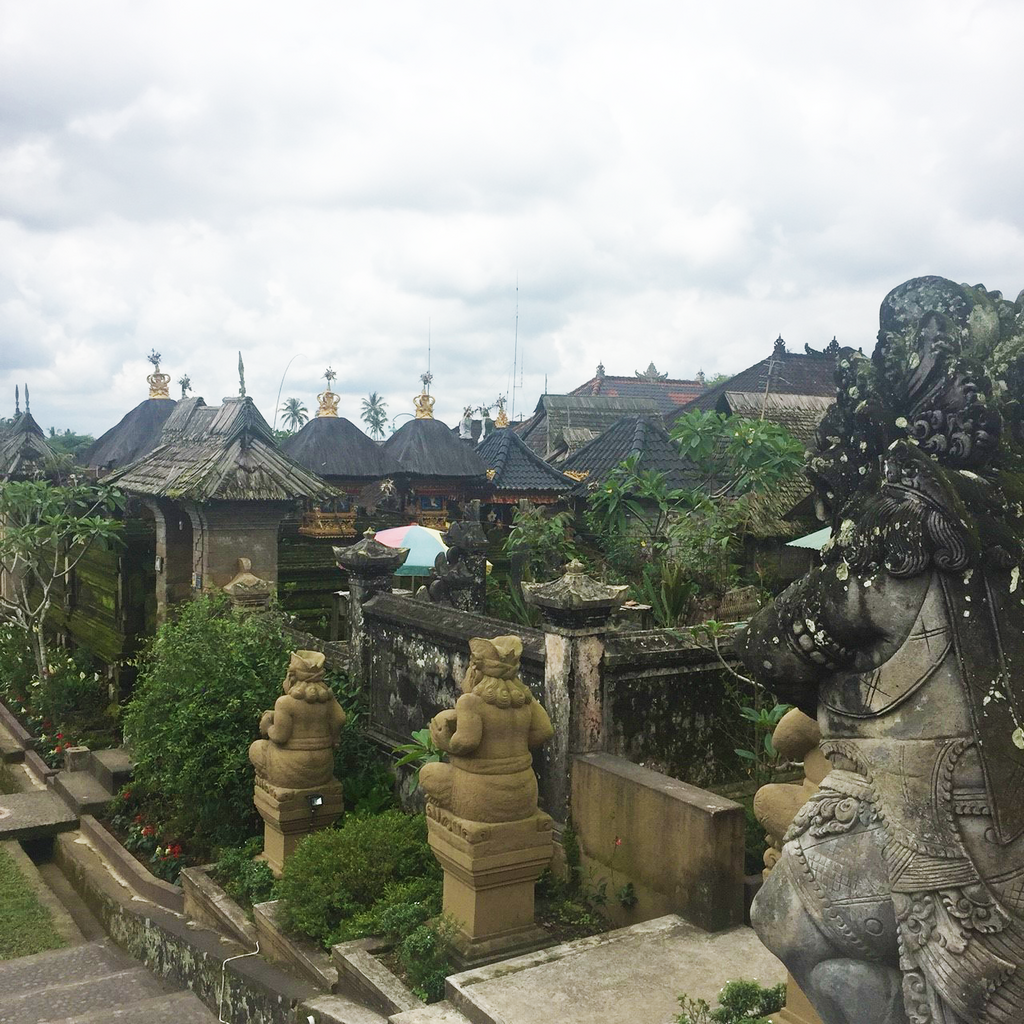
Gazing down upon the idyllic Penglipuran Village, the aerial view unveils a harmonious landscape of traditional houses and meticulously lined pathways, encapsulating the village’s serene beauty and cultural integrity from a captivating bird’s-eye perspective. Kiara Juliane, CC BY-SA 4.0, via Wikimedia Commons
Unique Characteristics:
- Adherence to the Tri Hita Karana philosophy
- Eco-friendly practices and sustainable living
- Traditional Balinese architecture and lush greenery
- Peaceful and tranquil atmosphere

Nestled amidst the emerald hills of Bali, Penglipuran Traditional Village emerges like a living painting, offering a timeless glimpse into Balinese heritage and culture. Its pristine pathways, adorned with neatly lined traditional houses, whisper stories of ancient traditions and communal harmony. Here, the air is filled with a sense of tranquility, inviting travelers to wander through its meticulously preserved streets and immerse themselves in the essence of an authentic Balinese way of life. ::::=UT=::::, CC BY-SA 3.0, via Wikimedia Commons
Must-See Attractions:
- Penglipuran Village Temple
- Bamboo Forest Penglipuran
- Holy Spring Sekawan
- Penglipuran Village Museum
Negara (West)
Negara serves as the administrative hub of West Bali and is surrounded by villages showcasing traditional Balinese life. Experience local markets, witness buffalo races (Makepung), and explore the rural countryside.
Unique Characteristics:
- Off-the-beaten-path destination with a laid-back atmosphere
- Renowned for its pristine beaches, ideal for swimming, surfing, and sunbathing
- Home to the West Bali National Park, a haven for wildlife enthusiasts
- Serene atmosphere with a blend of Balinese culture and natural beauty

Nestled along Bali’s western edge, the West Bali National Park emerges as a pristine sanctuary, where nature’s splendor meets untamed wilderness. Here, dense forests, vibrant mangroves, and secluded beaches converge, forming a haven for diverse wildlife and natural wonders. Towering trees embrace rare bird species, while elusive Javanese deer roam freely amidst the greenery. As the scent of wildflowers mingles with the salty ocean breeze, this protected expanse invites exploration, promising adventurous trails and secluded shores, making it an untouched paradise for those seeking solace in the heart of Bali’s untouched landscapes. Divergent43, CC BY-SA 4.0, via Wikimedia Commons
Must-See Attractions:
- West Bali National Park
- Medewi Beach
- Balian Beach
- Menjangan Island
- Pura Melanting Temple
Pemuteran Village (West)
Embrace the tranquility of Pemuteran Village, a coastal haven in West Bali. Witness the village’s dedication to environmental conservation, as it has transformed itself into a model of sustainable tourism. Explore the village’s pristine coral reefs, teeming with marine life, and discover the underwater wonders of the Menjangan Island Marine Park.
Unique Characteristics:
- Commitment to sustainable tourism and environmental protection
- Pristine coral reefs and abundant marine life
- Menjangan Island Marine Park, a haven for snorkeling and diving
- Peaceful atmosphere and authentic Balinese culture
Must-See Attractions:
- Menjangan Island Marine Park
- Biorock Reef Restoration Project
- Pemuteran Beach
- Pemuteran Village Temple
Kintamani Village (West)
Venture into the highlands of Kintamani Village, where breathtaking vistas and cultural treasures await. Ascend to the summit of Mount Batur and witness the mesmerizing sunrise casting a golden glow over the surrounding landscapes. Explore the village’s traditional temples, each offering a glimpse into the village’s spiritual heritage.
Kintamani Village offers a captivating blend of natural beauty, cultural immersion, and serene tranquility. Whether you seek breathtaking vistas, authentic Balinese experiences, or moments of relaxation, Kintamani Village is a destination that will leave a lasting impression.
Unique Characteristics:
- Nestled amidst the caldera of Mount Batur, offering breathtaking views
- Renowned for its stunning sunrise views over Mount Batur and Lake Batur
- Home to several temples and cultural attractions, showcasing Balinese heritage
- Serene atmosphere with a blend of natural beauty and cultural immersion
Must-See Attractions:
- Tegalalang rice terraces Bali: UNESCO World Heritage Site
- Penelokan Sunrise Point
- Kintamani Temple
- Toya Bungkah Hot Springs
- Mount Batur Sunrise Trek
- Sebatu Holy Spring
UNESCO Sites and Geopark in Bali | Discover World Heritage Wonders and Natural Beauty
EAST
Delve into the rich cultural heritage of East Bali’s captivating villages, where ancient weaving traditions, serene water palaces, and traditional salt-making practices showcase the island’s authentic charm.
Batuan (East)
Batuan stands as a bastion of Balinese artistry in the southern region. Explore ancient temples adorned with intricate carvings, peruse local art galleries featuring traditional paintings, and witness skilled artisans practicing their craft.
Unique Characteristics:
- Center for traditional Balinese painting and arts
- Abundance of art galleries and studios showcasing exquisite Balinese artwork
- Peaceful and serene atmosphere amidst lush greenery
- Home to the Batuan Museum, showcasing traditional Balinese art and artifacts

Pura Puseh, also known as the Puseh Temple, is a revered cultural gem nestled within the charming village of Batuan in Bali’s Gianyar district. Steeped in history and adorned with intricate carvings, this ancient temple stands as a testament to Bali’s rich cultural heritage. The temple’s ornate architecture, adorned with mesmerizing stone sculptures and elaborate designs, narrates tales of Balinese mythology and spirituality. LBM1948, CC BY-SA 4.0, via Wikimedia Commons
Must-See Attractions:
- Batuan Museum
- Batuan Art Market
- Batuan Puseh Temple
- Batuan Traditional Painters Association
- Puri Saren Royal Palace
Tenganan Village (East)
Embark on a journey through time in Tenganan Village, a secluded hamlet nestled in Karangasem Regency. This ancient village, believed to be one of Bali’s oldest settlements, is renowned for its unique double-Ikat weaving technique, known as geringsing. Immerse yourself in the village’s rich cultural heritage, where ancient traditions and intricate craftsmanship continue to thrive.

Nestled in the heart of Karangasem, the village of Tenganan stands as a living testament to Bali Aga architecture, preserving ancient traditions within its compounds. The distinctive Bali Aga architecture in Tenganan whispers tales of heritage through its intricately designed structures, offering a glimpse into the island’s rich cultural legacy. DayakSibiriak, CC BY-SA 4.0, via Wikimedia Commons
Unique Characteristics:
- Ancient village believed to be one of Bali’s oldest settlements
- Renowned for its unique double-Ikat weaving technique, known as geringsing
- Rich cultural heritage with ancient traditions and intricate craftsmanship
- Peaceful and tranquil atmosphere
Must-See Attractions:
- Tenganan Traditional Weaving Village
- Tenganan Museum
- Tenganan Village Temple
- Geringsing Weaving Workshops
Amed (East)
Amed is a coastal gem nestled in the island’s east, renowned for its tranquil atmosphere and vibrant marine life. Far from the bustling tourist hubs, this fishing village invites travelers to experience the serene rhythm of coastal living, pristine beaches, and world-class snorkeling and diving spots.
Unique Characteristics:
- Picturesque coastal village with a laid-back atmosphere
- Black sand beaches and crystal-clear waters
- Popular snorkeling and diving destination with abundant marine life
- Serene atmosphere with stunning ocean views

At the fishing village of Amed, East Bali unveils its coastal splendor with pristine beaches embracing the horizon. The tranquil shores are a canvas of serenity, where fishing boats sway gently on crystal-clear waters. Against the backdrop of Mount Agung’s majestic silhouette, the beach at Amed invites travelers to bask in the simplicity and authentic charm of a traditional Balinese fishing village. Marklchaves, CC BY-SA 4.0, via Wikimedia Commons
Must-See Attractions:
- Amed Beach
- Lipah Bay
- Tulamben Wreck
- Jemeluk Bay
- Amed Art Gallery
Sidemen Village (East)
Escape the tourist crowds and discover the tranquility of Sidemen Village, a hidden gem nestled amidst the lush rice paddies of Karangasem Regency. Explore the village’s verdant landscapes, dotted with traditional Balinese houses and temples. Immerse yourself in the village’s peaceful atmosphere, where the rhythm of life unfolds in harmony with nature’s embrace.
Unique Characteristics:
- Hidden gem nestled amidst lush rice paddies and verdant hills
- Peaceful and tranquil atmosphere with authentic Balinese culture
- Traditional Balinese houses and temples
- Abundance of hiking trails and waterfalls
Must-See Attractions:
- Sidemen Rice Paddies
- Sidemen Waterfall
- Sidemen Temple
- Selasih Beach
- Sidemen Village Art Market
Tirta Gangga (East)
Tirta Gangga features royal water gardens and traditional village life. Visit the majestic water palace, stroll through lush gardens, and admire the village’s cultural heritage.
Unique Characteristics
- Water Palace: Tirta Gangga is a captivating water palace complex, renowned for its serene ponds, lush gardens, and historical significance.
- Harmonious Blend of Nature and Architecture: The palace seamlessly integrates natural elements with Balinese architectural features, creating a tranquil and harmonious ambiance.
- Cultural Heritage: Tirta Gangga is a testament to Balinese cultural heritage, showcasing intricate carvings, traditional sculptures, and sacred water springs.
- Tranquil Atmosphere: The palace offers a tranquil escape from the crowds, allowing visitors to immerse themselves in the serene beauty of the surroundings.
Must-See Attractions
- Main Pond: Admire the main pond, a centerpiece of the palace, surrounded by lush gardens and ornate stonework.
- Royal Bathing Pools: Explore the royal bathing pools, considered sacred water springs with healing properties.
- Stone Carvings and Sculptures: Discover intricate stone carvings and sculptures depicting mythological creatures, deities, and traditional Balinese motifs.
- Gardens and Water Features: Stroll through the meticulously manicured gardens, dotted with water features, fountains, and secluded courtyards.
Bebandem (East)
Bebandem is a lesser-known village in East Bali, offering a tranquil setting amidst lush landscapes. Visitors can witness local village life, visit nearby temples, and partake in authentic cultural experiences.
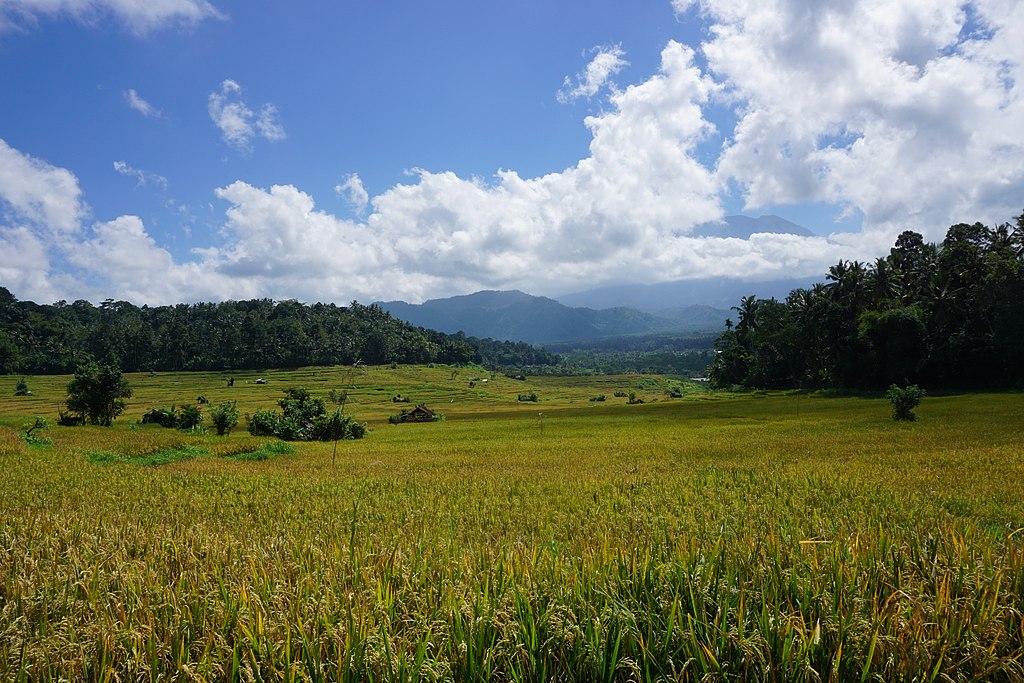
Rice Terrace of Bandem. The following image shows a stretch of rice ready to be harvested against the backdrop of the Mount Agung mountain range (covered in clouds. This image was taken in the Banyakdem area which is located north of the city of Amlapura, Karangasem, Bali). Bagus Purnamasidi, CC BY-SA 4.0, via Wikimedia Commons
Unique Characteristics:
- Renowned for its traditional Balinese arts and crafts
- Center for woodcarving, painting, and stone carving
- Abundance of art galleries and workshops
- Vibrant cultural atmosphere with traditional performances and ceremonies
Must-See Attractions:
- Bebandem Art Village
- Bebandem Museum
- Bebandem Temple
- Woodcarving Workshops
- Traditional Balinese Performances
CENTRAL
Embark on a journey to the heart of Bali, where captivating landscapes, ancient traditions, and serene retreats intertwine, offering a harmonious blend of cultural immersion, natural beauty, and tranquility.
Mas Village (Central)
Located about 6 km from Ubud, in the Mas Village you can discover the artistic heart of Ubud in Mas Village, a haven for woodcarving enthusiasts. Stroll through the village’s narrow lanes lined with workshops and galleries showcasing exquisite wood carvings, each piece a testament to the village’s enduring artistic legacy. Witness the skillful hands of artisans transforming ordinary wood into masterpieces, breathing life into stories and legends.
Ubud Village (Central)
Step into the heart of Bali’s cultural renaissance in Ubud Village, a vibrant hub of art, spirituality, and natural beauty. Stroll through the village’s bustling streets lined with art galleries, traditional craft shops, and cozy cafes. Immerse yourself in the village’s creative spirit, where traditional performances, art exhibitions, and cultural events showcase the essence of Balinese artistry.
Unique Characteristics:
- Vibrant artistic community with a rich cultural heritage
- Abundance of art galleries, museums, and cultural performances
- Home to the Ubud Royal Palace and the Monkey Forest
- Serene atmosphere amidst lush greenery and rice paddies
Read also: Ubud Complete Travel Guide and Must Visit Places
Must-See Attractions:
- Ubud Art Market
- Puri Saren Royal Palace
- Monkey Forest Ubud
- Neka Art Museum
- Tegalalang Rice Terraces
Jatiluwih Village (Central)
Unveil the breathtaking beauty of Jatiluwih Village, a UNESCO World Heritage Site famed for its cascading rice terraces. Trek through the village’s verdant hillsides, where the emerald green rice paddies stretch as far as the eye can see. Witness the harmonious coexistence of humans and nature, as the village’s traditional irrigation system has sustained these rice terraces for centuries.
Unique Characteristics:
- UNESCO World Heritage Site renowned for its cascading rice terraces
- Breathtaking scenery with lush greenery and panoramic views
- Traditional Balinese agricultural practices and harmonious coexistence with nature
- Serene atmosphere with a glimpse into rural Balinese life
Must-See Attractions:
- Jatiluwih Rice Terraces
- Jatiluwih Subak Museum
- Jatiluwih Temple
- Jatiluwih Agroforestry Park
- Jatiluwih Village Art Market
Celuk Village (South)
Immerse yourself in the shimmering world of Celuk Village, the silver jewelry capital of Bali. Explore the village’s bustling workshops and witness the intricate craftsmanship of local artisans as they transform silver into delicate works of art. From ornate necklaces and pendants to intricate rings and bracelets, Celuk’s jewelry encapsulates the spirit of Balinese artistry.
Celuk is known as a village of goldsmiths. Almost he entire village works on making jewelry, with extremely basic tools. So, Celuk is littered with goldsmith shops – but if you want to take the opportunity to do some shopping, know that those on the side streets are much more interesting than those on the main streets.

Arm jewelry. A bracelet with two naga heads. Part of the bracelet is decorated with scales and (semi) precious stones. Upper arm jewelry with double-headed snake. Tropenmuseum, part of the National Museum of World Cultures, CC BY-SA 3.0, via Wikimedia Commons
Unique Characteristics:
- Center for silver jewelry production in Bali
- Abundance of silver workshops and galleries
- Skilled artisans creating exquisite silver jewelry
- Lively atmosphere with a blend of tradition and modernity
Must-See Attractions:
- Celuk Silver Jewelry Market
- Celuk Village Museum
- Taman Gahia Cultural Park
- Celuk Beach
NORTH
Escape the crowds and discover the hidden gems of North Bali’s picturesque villages, where verdant hills, cascading waterfalls, and traditional Balinese life provide a tranquil escape.
Munduk Village (North)
Nestled in the highlands of Buleleng Regency, Munduk Village offers a tranquil escape from the bustling tourist areas. Explore the village’s verdant landscapes dotted with traditional Balinese houses and temples. Immerse yourself in the village’s peaceful atmosphere, where the rhythm of life unfolds in harmony with nature’s embrace.

Nestled within the tranquil landscapes of Buleleng Regency, Munduk in Banjar emerges as a hidden gem in Bali, offering a serene escape into nature’s embrace. This picturesque village is adorned with verdant rice terraces, cascading waterfalls, and a cool mountainous climate that blankets the surroundings. Travelers seeking solace amidst Bali’s unspoiled beauty find themselves enchanted by the charm of Munduk, where the whispers of rustling leaves, the mist-kissed air, and the panoramic vistas captivate the soul. Amidst its serene ambiance, Munduk invites explorers to indulge in hikes through lush trails, discover stunning waterfalls, and immerse themselves in the idyllic allure of Bali’s untouched landscapes. F-GSPY, CC BY 3.0, via Wikimedia Commons
Unique Characteristics:
- Serene highland setting with breathtaking views
- Lush greenery and traditional Balinese architecture
- Peaceful atmosphere and authentic Balinese culture
- Abundance of waterfalls and hiking trails
Must-See Attractions:
- Munduk Waterfall
- Wanagiri Hidden Hills
- Tamblingan and Buyan Lakes
- Batur Temple
Gitgit Village (North)
Discover the hidden gem of Gitgit Village, nestled amidst the lush greenery of North Bali. Stroll through the village’s narrow lanes and witness the serene beauty of the Gitgit Waterfall, cascading down amidst the tropical rainforest. Experience the village’s authentic Balinese culture and warm hospitality.
Unique Characteristics:
- Authentic Balinese village with a traditional way of life
- Picturesque setting amidst lush greenery
- Gitgit Waterfall, a natural wonder
- Warm hospitality and genuine Balinese culture
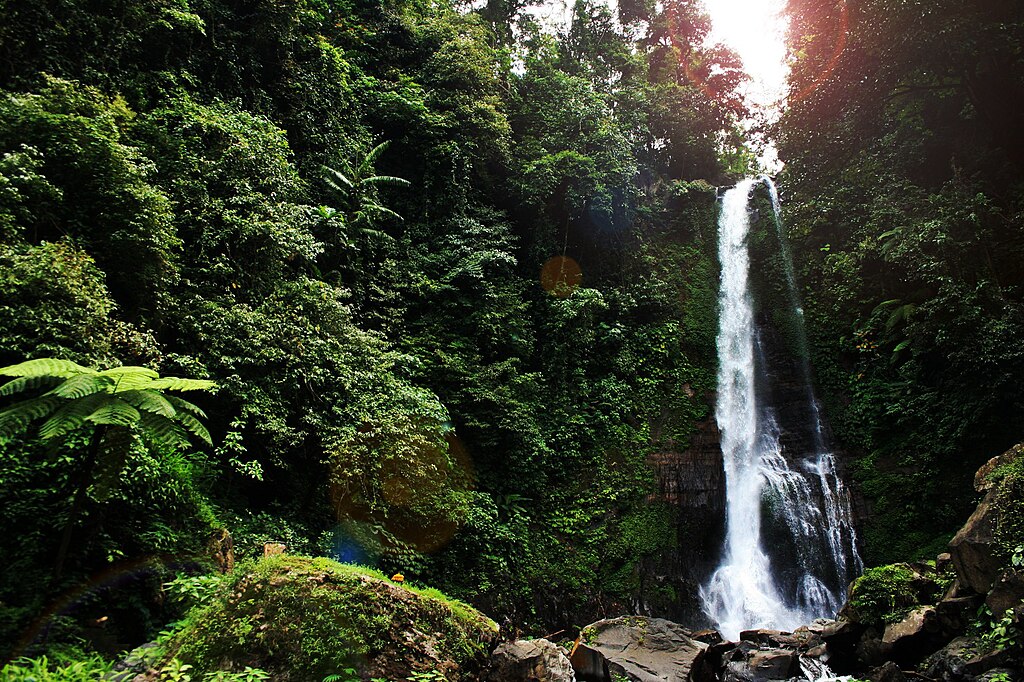
Hidden amidst Bali’s lush wilderness, Gitgit Waterfall emerges as a breathtaking natural spectacle, a true gem for nature enthusiasts and adventurers alike. Cascading gracefully from towering heights, this pristine waterfall unveils its serene beauty amidst verdant foliage and rocky outcrops. As the crystal-clear waters gracefully descend, they create a soothing melody that resonates through the dense forest, inviting visitors to immerse themselves in the tranquil ambiance. With each step along the jungle path, the anticipation builds, leading to the awe-inspiring sight of Gitgit Waterfall, where the harmony of nature’s grandeur and tranquility awaits those who venture to witness its captivating allure. Rainhard Findling, CC BY-SA 3.0, via Wikimedia Commons
Must-See Attractions:
- Gitgit Waterfall
- Pura Yeh Ketipat
- Yeh Ketipat Beach
- Secret Garden Village
Lovina (North)
Lovina invites visitors to explore the tranquility of Bali’s northern coast. Comprising several villages, Lovina offers a laid-back atmosphere, dolphin watching tours, black sand beaches, and a glimpse into local fishing communities.
Unique Characteristics:
- Peaceful coastal town with a laid-back atmosphere
- Renowned for its dolphin watching opportunities
- Black sand beaches and calm waters, ideal for swimming and snorkeling
- Home to several temples and cultural attractions, showcasing Balinese heritage

Standing tall in the heart of Temukus village, the Dolphin Statue is a symbol of reverence and admiration for Lovina Beach’s gentle marine inhabitants. With graceful arcs and an ethereal presence, this statue embodies the spirit of Lovina’s renowned dolphins, encapsulating the community’s deep connection to the sea. Set against the backdrop of Lovina’s serene coastline, the statue stands as both a tribute to nature’s beauty and an invitation for visitors to embrace the enchantment of Bali’s marine wonders. DayakSibiriak, CC BY-SA 4.0, via Wikimedia Commons
Must-See Attractions:
- Lovina Beach
- Black Sand Beach
- Dolphin Watching Tours
- Git Git Waterfall
- Brahmavihara Arama Buddhist Monastery
NORTH WEST
Embrace the laid-back bohemian vibe of Northwest Bali’s coastal villages, where world-class surf breaks, pristine beaches, and ancient burial customs offer an unforgettable blend of adventure and tradition.
Sambirenteng (Northwest)
Sambirenteng is a charming coastal village offering a peaceful escape in North Bali. Known for its pristine beaches and coral reefs, it’s an ideal spot for relaxation and snorkeling adventures.
Unique Characteristics:
- Off-the-beaten-path destination with a laid-back atmosphere
- Renowned for its pristine beaches, ideal for swimming, snorkeling, and surfing
- Home to the Sekumpul Waterfall, a cascading waterfall nestled amidst lush greenery

Nestled within the heart of Bali’s lush landscapes, Sekumpul Waterfall, also affectionately known as Gerombong Waterfall, cascades majestically from a height of approximately 100 meters (328 ft). Embraced by the natural beauty of Sekumpul Village in Sawan District, Buleleng Regency, this awe-inspiring wonder captivates visitors with its sheer grandeur and serene surroundings. The journey to this hidden gem is a trek through vibrant forests and tranquil paths, unveiling the allure of Bali’s unspoiled nature and offering an unforgettable encounter with the mesmerizing splendor of this magnificent waterfall. Putu Andika Panendra, CC BY-SA 4.0, via Wikimedia Commons
Must-See Attractions:
- Sekumpul Waterfall
- Aling-Aling Waterfall
- Git-Git Waterfall
- Secret Garden Village
- Munduk Village
Best Waterfalls in Bali | Discovering the Natural Beauty and Wonders
Trunyan Village (North West)
Embark on a mystical journey to Trunyan Village, nestled amidst the serene shores of Lake Batur. This unique village is renowned for its ancient burial customs, where the deceased are laid to rest in open-air bamboo containers without shrouds or coffins. Witness the delicate balance between life and death in this village, where nature and tradition intertwine.
Unique Characteristics:
- Unique village nestled amidst serene shores of Lake Batur
- Renowned for its ancient burial customs, where deceased are laid to rest in open-air bamboo containers
- Peaceful and tranquil atmosphere with a blend of nature and tradition
- Home to several temples and cultural attractions, showcasing Balinese heritage
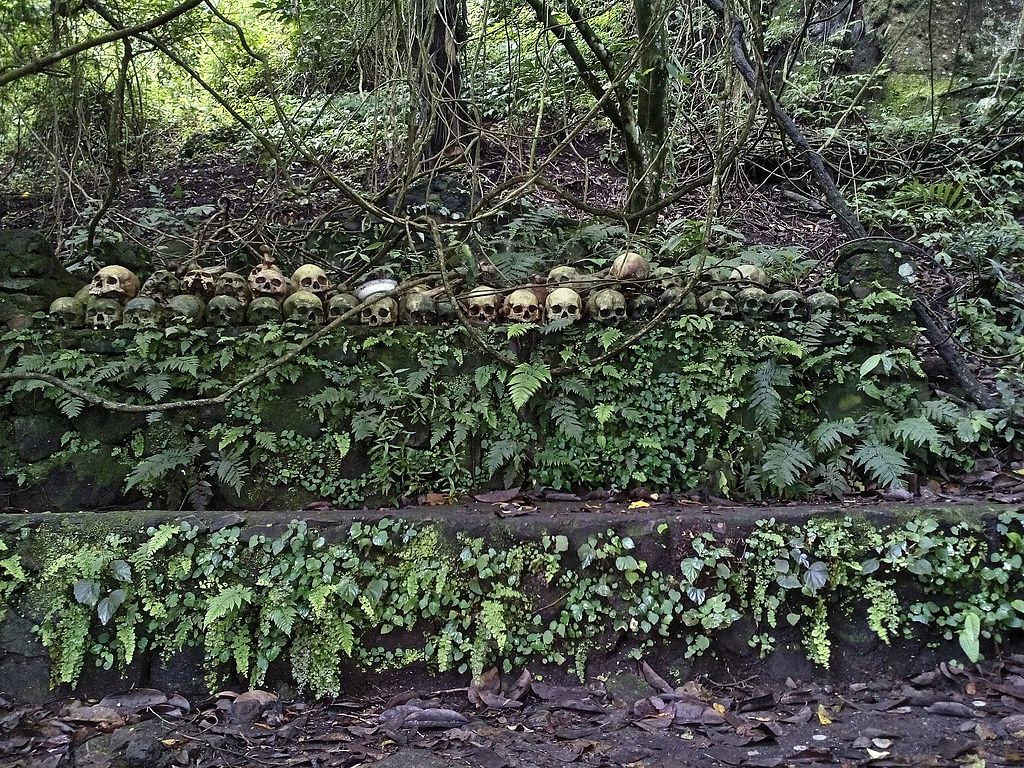
Tucked away in the heart of Bali, Trunyan Village stands as a cultural gem known for its unique cemetery, an intriguing attraction that beckons curious travelers. Far removed from traditional burial practices, this village preserves an ancient ritual where the deceased are laid to rest aboveground, surrounded by the natural elements. The serene beauty of Lake Batur frames this sacred site, where centuries-old traditions intertwine with the tranquility of the landscape, offering a glimpse into the cultural tapestry and unconventional customs that define the spirit of Trunyan Village. Arfiana Rahma Shanti, CC BY-SA 4.0, via Wikimedia Commons
Must-See Attractions:
- Trunyan Village Temple
- Trunyan Lake
- Trunyan Royal Cemetery
- Trunyan Village Museum
- Trunyan Traditional Weaving Workshops
Trunyan Village | Complete Guide to Visit the Skull Village a Traditional Village in North East Bali
Seririt (Northwest)
Seririt offers a glimpse into authentic village life with its serene surroundings and agricultural landscapes. Discover local markets, traditional Balinese architecture, and serene countryside.
Seririt is located on the main road from Singaraja to Gilimanuk, less than 30 km from Singaraja. This large village is located at the crossroads of this road and the magnificent one which comes from Pupuan, Busungbiu, Mayong and Rangdu, in the south.
You can reach the lake region, or go directly towards Denpasar via this road planted with orchards, coffee, cloves and grapes, and stop, for example, at Munduk. This road really deserves a detour, we take advantage of it, without being in a hurry, to stop for photos or walks when the scenery tempts us, that is to say, often. An enchantment!
Unique Characteristics:
- Coastal town with a relaxed atmosphere and stunning ocean views
- Renowned for its snorkeling and diving spots, offering a glimpse into Bali’s vibrant marine life
- Home to peaceful beaches and a laid-back coastal lifestyle
Must-See Attractions:
- Seririt Beach
- Menjangan Island
- Biorock Reef Restoration Project
- Pemuteran Beach
- Pemuteran Village Temple
NORTHEAST
Uncover the authentic side of Bali in its untouched Northeast region, where UNESCO World Heritage rice terraces, historical royal palaces, and secluded waterfalls reveal the island’s hidden treasures.
Singaraja (Northeast)
Singaraja, Bali’s former capital, boasts a blend of historical and cultural treasures. Wander through its charming streets, explore traditional markets, and discover remnants of Dutch colonial architecture.
Unique Characteristics:
- Former capital of Bali, steeped in rich history and culture
- Home to the iconic Singaraja Royal Palace, a testament to the region’s heritage
- Vibrant cultural scene with traditional dance and music performances
- Serene atmosphere with a blend of ancient traditions and modern life
Must-See Attractions:
- Singaraja Royal Palace
- Taman Ayun Temple
- Pura Tanah Lot Temple
- Alas Kedaton Monkey Forest
- Git Git Waterfall
Photo credit: DrLancelot via Pixabay
Discover the Best Hidden Gems in Bali: Off-the-Beaten-Path Destinations You Don’t Want to Miss
Reserve your private pool villa located in the heart of Seminyak
Discover the convenience of Villa Carissa in the heart of Seminyak, offering effortless access to adventure and serenity. Perfect for family getaways, friend gatherings, or intimate escapes, our villa exceeds expectations. Unveil Bali’s charms while reveling in the tranquility of your private pool villa—a sanctuary in Seminyak. Don’t miss out—book now and embark on an unforgettable experience with Villa Carissa Bali.

